As spring casts its rousing warmth across the country, get ready for your wildlife sightings to soar.
Discover what to look out for as winter melts away to reveal vibrant spring colours and an abundance of life around the British Isles, including wildlife in your garden and further afield.
Beech (Fagus sylvatica)

Green is the colour that soothes us most. It has been shown to help relax us and relieve anxiety, and children in green neighbourhoods do better at school. It may also partly explain why shinrin-yoku, the Japanese custom of ‘forest bathing’, can have such a powerful, restorative effect. And for intensity, there is nothing quite like the vibrant green of fresh foliage in April. At this stage of spring, the young leaves are naturally paler, because they are thinner, softer and contain less chlorophyll than later in the season. Beech is well known for the beauty of its April foliage. It is one of the last broad-leaved trees in the British Isles to leaf up, generally not starting until the middle of the month. The newly unfurled leaves are tissue-thin to begin with, but it is their colour that delights: a zesty shade of lime-green.
Pied flycatcher (Ficedula hypoleuca)
Pied flycatchers return to the UK in April, after a winter spent in the tropical jungles of West Africa. They are swapping one rainforest for another, because the wonderful old oak woods where they love to nest are relics of the temperate rainforest that once covered much of northern and western Britain. Until mid-May, these damp, mossy, fern-rich woods will be alive with birdsong. But the flycatchers’ own performance is subtle – a lilting, somewhat mournful tune of about five simple notes, sung over and over.
When the flycatchers have found mates, they fall silent to concentrate on raising a family. But some males secretly find time to pair up with a second female nearby, before returning to their original nest. Meanwhile, there’s no guarantee their first partner will stay faithful. The complex sex life of the species has made it a popular research subject – it is now one of the world’s best-studied songbirds!
Blackbird (Turdus merula)
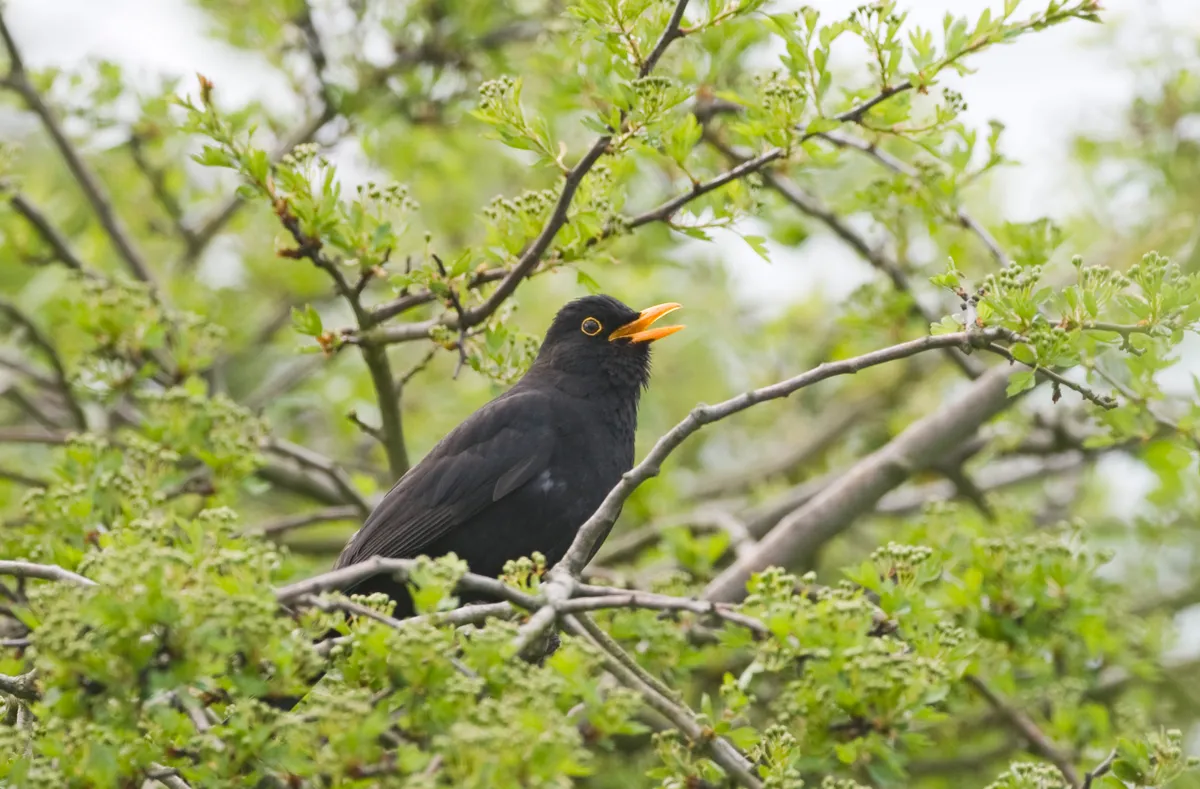
One of the great joys of spring’s golden hour around sunrise and sunset is the mellifluous, supremely relaxed fluting of male blackbirds coming from high branches and rooftops. So close your eyes, tune in to the birdsong and feel your spirits lift. As nature writer and former BBC Wildlife columnist Richard Mabey once said: “It would be nice to believe the blackbirds enjoy it, too.”
Peacock butterfly (Aglais io)
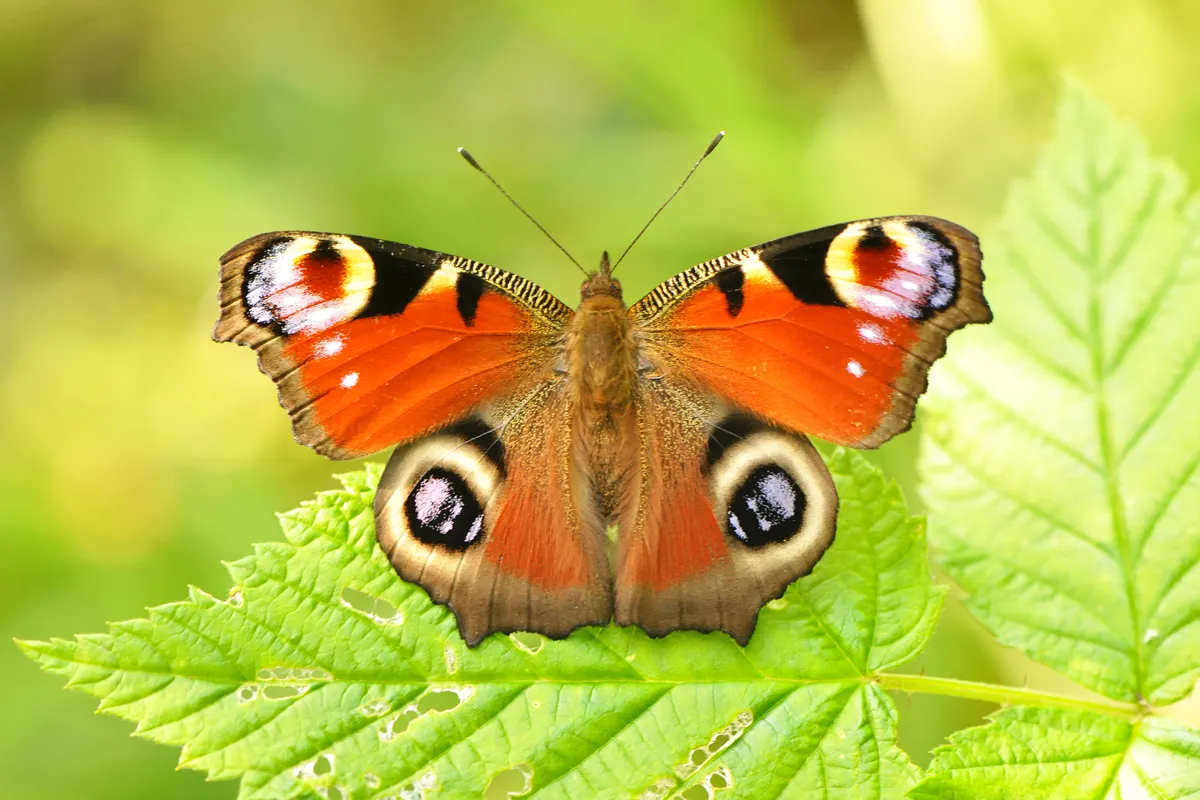
Most peacock butterflies rouse from months of winter torpor in March and early April, looking for nectar and sex – one wonders how they avoid sensory overload. Their eyes detect movement faster than us, thanks to myriad photoreceptor cells in tiny units called ommatidia, their twin antennae smell the air in stereo and their tactile legs are more sensitive than our fingertips.
Brown hare (Lepus europaeus)
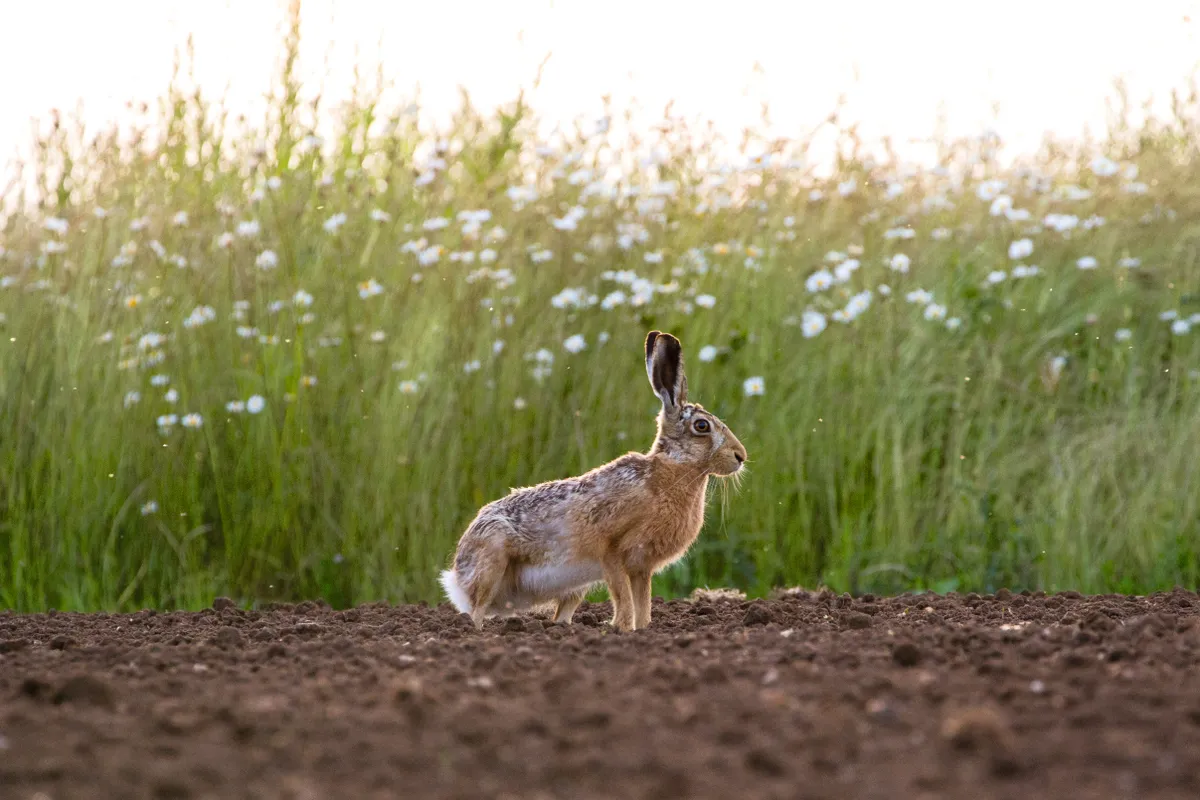
No mammal is more closely associated with spring than the brown hare, and by April the year’s first babies, called leverets, have arrived.
If you’re lucky, you might spot some a few days old, hunkered down in a bed of grass. It may seem odd to see such young animals on their own, with no mother in sight, but the leverets are far from helpless.
When it comes to raising young, hares and rabbits are like chalk and cheese. Newborn rabbits, called kits, weigh just 30g and resemble naked, sightless sausages. By contrast, leverets weigh in at around 100g when they are born and look like fully-furred, perky mini-antelopes – at two days, they can already run pretty swiftly.
Where rabbit kits stay underground for their first two or three weeks, leverets start life out in the open. Their mother visits just once a day, to suckle them and tidy up, lingering only a few minutes to avoid attracting any unwanted attention.
Ground ivy (Glechoma hederacea)
Some wildflowers are merely good for bees, while others are brilliant. Ground ivy is in the latter group. This bee magnet reliably attracts a wide variety of species during its spring flowering season, from March to May.
In fact, you can often hear the plant before you can see it! The purplish-blue flowers are not particularly showy, but their plentiful nectar clearly goes down a treat. Ground ivy isn’t related to ivy, nor does it look like ivy, though it does have evergreen leaves and a rambling, sprawling habit. It spreads vigorously using underground rhizomes, often forming a carpet over the woodland floor, along hedges or banks, or on short grassland.
If you rub the furry, kidney-shaped leaves, they give off a pleasantly sage-like smell. When dried, they make a passable herbal tea, and in the past the plant (then called alehoof) was important for clarifying beer.
Gypsy cuckoo bumblebee (Bombus bohemicus)
Some bees are not what they at first appear. A gypsy cuckoo bumblebee, as its name suggests, takes over the nests of other bumblebees. Using a mix of violence and pheromone inducement, the intruder forces the colony’s workers to raise her young instead. The cuckoo has a larger, more powerful sting and usually, though not always, kills the original host queen. It sounds brutal, but we should not be surprised; most social insects have parasites, after all.
In Britain and Ireland, there are six species of cuckoo bumblebee, which often resemble their hosts, but fly with a deeper hum. They differ from social bumblebees in several key respects. For a start, there are only males and females, but no queens or workers. The females lack pollen baskets on their hind legs, since they have no need to forage. They are also unable to produce wax, so rely on the larval cells already made by the host queen. For their trick to work, they must find an established colony in spring, with just the right amount of workers – too many, and the workers may overpower the usurper and foil her plan.
Grasshopper warbler (Locustella naevia)
The grasshopper warbler does an excellent job of sounding like an insect. Its spring song resembles the high-pitched whirring of a grasshopper or bush-cricket and is sustained for minutes at a time, so that it blends into the background, just as insect sounds do. But rather helpfully, this migratory bird starts singing soon after it returns to the UK, from mid-April onwards, whereas real grasshoppers and bush-crickets don’t strike up until later in summer. The song is frequently compared to fishing line being paid out, and has its own name: reeling.
This is a well-camouflaged bird that avoids the limelight, spending most of its life hunting insects close to the ground among damp thickets or waterside vegetation, making it easier to hear than see. Occasionally, a reeling male will appear at the top of a bramble stem or hawthorn bush, giving fortunate birders the briefest of views, but that’s about it.
Learn more about UK birds:
Corncrake (Crex crex)
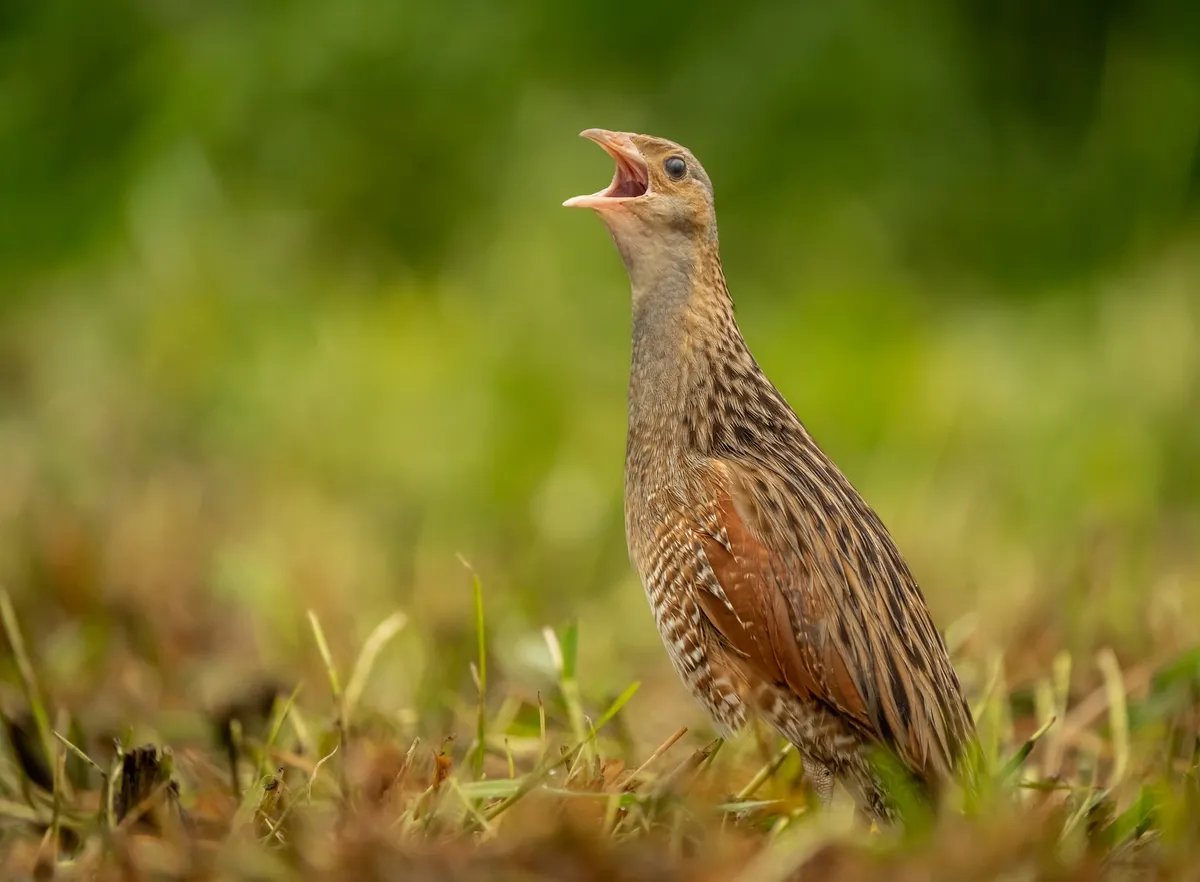
In April, rare corncrakes return from their wintering grounds in Africa. Once known as land rails, these streaky, moorhen-like birds like to creep through dense meadow vegetation, which makes them infuriatingly difficult to see. But they famously make a racket with a voice that sounds like a piece of wood being moved across the teeth of a comb. Newly arrived males rasp their grating call up to 20,000 times a night, and people used to grumble that they couldn’t sleep. It’s not a complaint you hear often nowadays: corncrake numbers crashed after the Second World War due to agricultural intensification. Just 824 calling males were recorded in 2022 throughout the Outer Hebrides off western Scotland, with around 150 in Ireland. A handful of reintroduced birds can be heard in East Anglia. As the RSPB’s Lee Schofield says in Wild Fell, what corncrakes really need is varied farmland mosaics with “a degree of general untidiness” that allow space for plentiful patches of nettles and other ‘weeds’. This has proved frustratingly hard to achieve, despite years of conservation effort.
Red campion (Silene dioica)
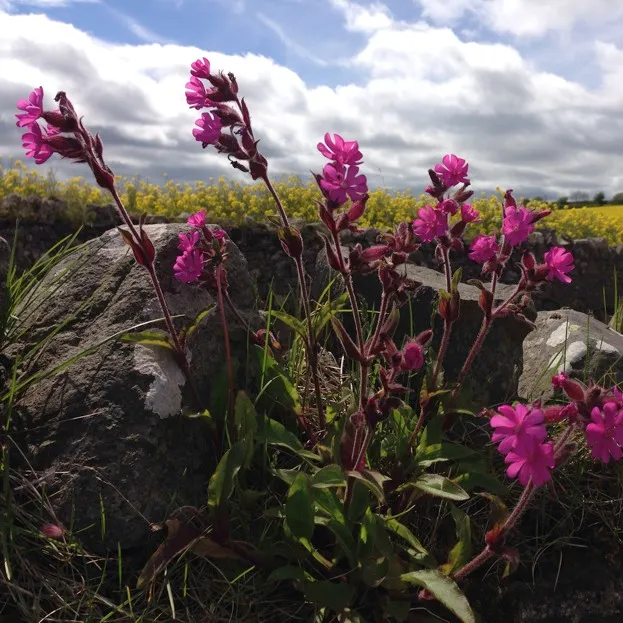
Most plants have both female and male parts – they are hermaphrodites. But one of our commonest spring wildflowers, red campion, exists as separate sexes. Peer into the pale flower centres and you should see either club-like male stamens or curly female stigmas. Usually males, which produce the pollen, outnumber females, which ensures there is plenty to go round.
Learn more about wildflowers:
Curlew (Numenius arquata)
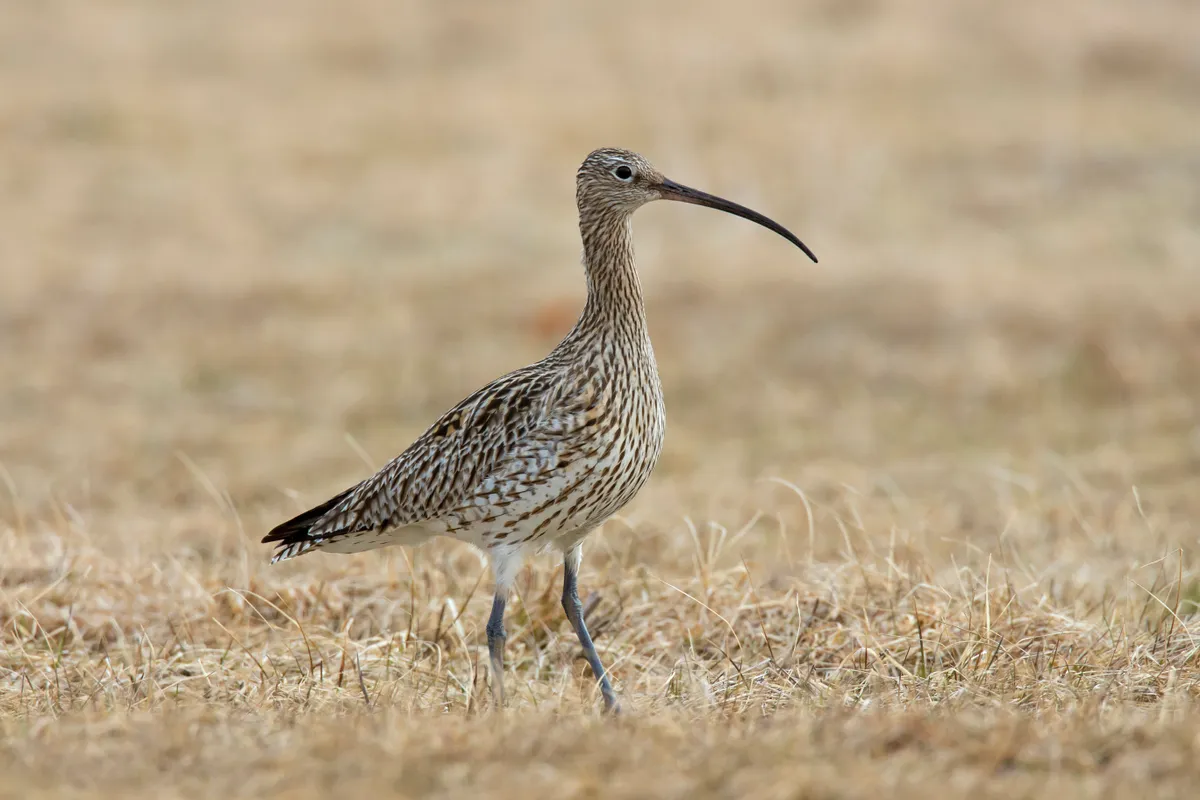
Spring is a feast for all the senses, when wild sounds in particular seem thrillingly intense. None more so than the haunting song of the male curlew, with its long, low notes quickening into a sustained bubbling trill that sends shivers down your spine. But unless we do more to help this threatened species, its soul-stirring springtime display will soon be lost.
Lords-and-ladies (Arum maculatum)
The arum lily, or lords-and-ladies, is among the most familiar woodland plants in the British Isles, and one of the most curious. Its shiny leaves begin growing quite early in spring, and have arrow-like points. These curl to form a hood or sheath around an erect purple-brown spike, called the spadix. The spadix is actually a cluster of many small flowers, and when fully developed releases an unpleasant scent like stale urine, as well as giving off heat. Tiny flies are attracted, thus pollinating the plant.
Another common name for this botanical oddity is cuckoo pint. ‘Pint’ is old slang for penis, and you can probably work out why the plant brought this to mind. Many of its other alternative names such as ‘Jack-in-the-pulpit’ and ‘soldier-in-a-sentry-box’ are also double-entendres. As BBC Wildlife columnist Nick Baker wryly observes in his book British Wildlife, its traditional names contain more innuendo than a Carry On film.
St Mark's fly (Bibio marci)
Swarms of hairy black flies with dangly back legs are a feature of warm spring days, especially over wetlands, along country lanes and hedgerows, and in woodland glades. These are St Mark’s flies, named for their emergence on or around St Mark’s Day (25th April), although our changing climate is weakening this traditional link by helping them appear earlier. Another of their names is ‘hawthorn fly’, which honours their fondness for the nectar of hawthorn blossom, also hard to avoid at this time of year.
As is often the case in the fly world, adult St Mark’s flies survive barely a week, after feeding on decaying vegetation as maggots. The black clouds consist mostly of males, waiting for their chance to mate with emerging female flies. Though the swarms are short-lived, they provide valuable food for freshly arrived migratory birds, enabling them to refuel after their long journeys.
Three-spined stickleback (Gasterosteus aculeatus)
Sticklebacks are tiddlers with a big personality, and April is the start of their spawning season, when the male fish transform from dowdy, brownish creatures to aquatic eye candy. Their belly flushes scarlet, while their flanks and eyes acquire stunning blue highlights. Equally striking is their change in behaviour. Territorial males will not let rivals come anywhere near, nor in fact will they permit anything red, alive or dead, to intrude on their patch. They are guarding nests made from scraps of weed and other vegetation, in the hope that passing females will be tempted to spawn there. Should a potential mate appear, they seal the deal by zigzagging through the water to show off their fitness and the location of their boudoir.
No more than 11cm long, sticklebacks are like miniature pike, in the sense that they are solitary predators. By contrast, minnows – another little freshwater fish – form shoals that often swim up to inspect the feet of wild swimmers and paddlers. Sticklebacks can be found in a wide range of streams, ditches and ponds, even if the water is not very clear.
Blue tit (Cyanistes caeruleus)
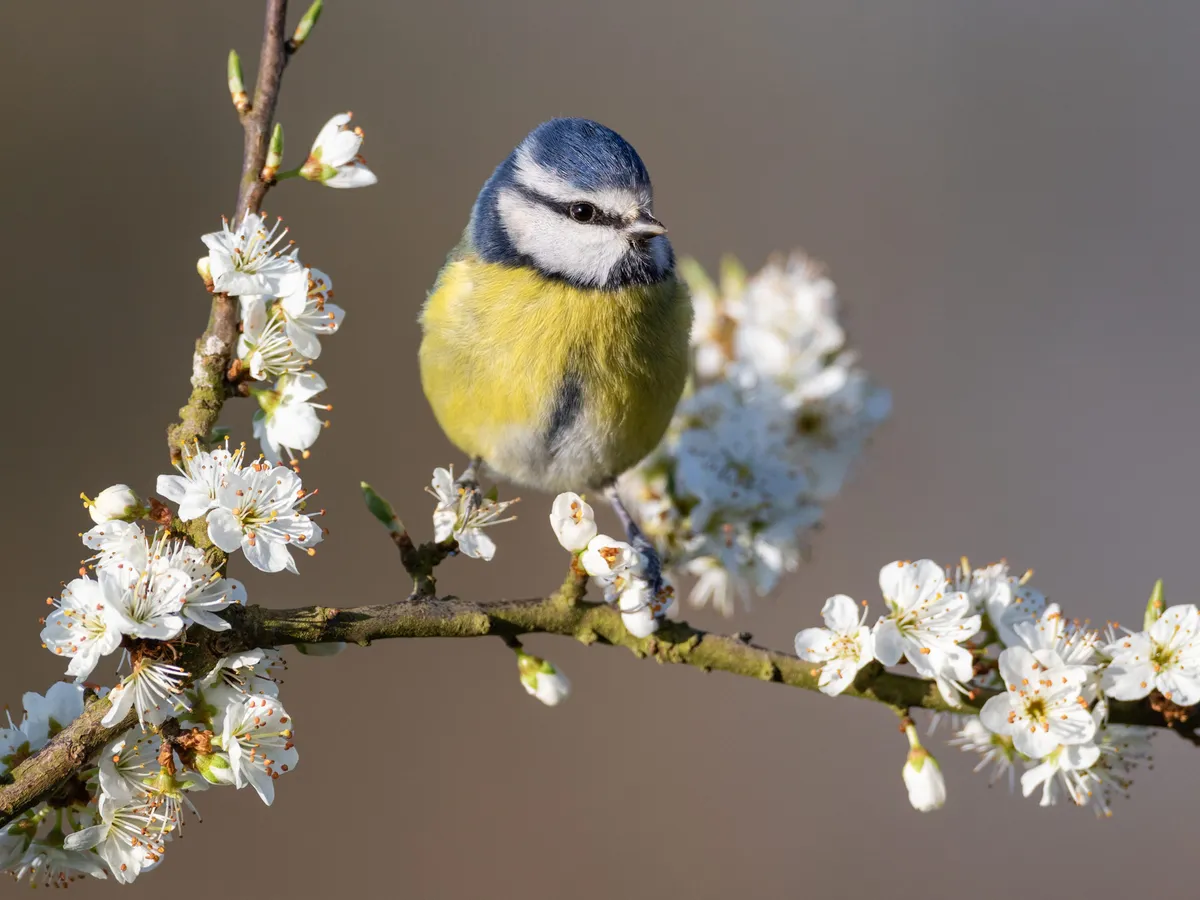
Blue tits are feisty for their size – just ask any bird ringer. Like great tits, they’re notorious for pecking the fingers of those attempting to ring them (a harmless process that has told us much about their fascinating life histories). Pluck is no defence against the elements, however.
Britain’s blue tits suffered a poor breeding season in 2021, due to a dry, then wet and chilly spring, which meant nestlings hatched before the annual explosion in caterpillar numbers. For the first time in 17 years, Springwatch had no blue tit chicks on its live cameras.
The good news is that blue tit populations can recover quickly. The species has huge clutches: a dozen eggs is normal. Clutches of 16 are known, phenomenal for a bird that weighs 10–11g. Females lay in April or May, and it’s worth watching an occupied nestbox to see how the pace of activity changes with hatching.
Two signs to look for are increased visits by the male with food, and birds leaving the box carrying the chicks’ neat white droppings, or faecal sacs, to deposit away from the nest.
Red dead-nettle (Lamium purpureum)
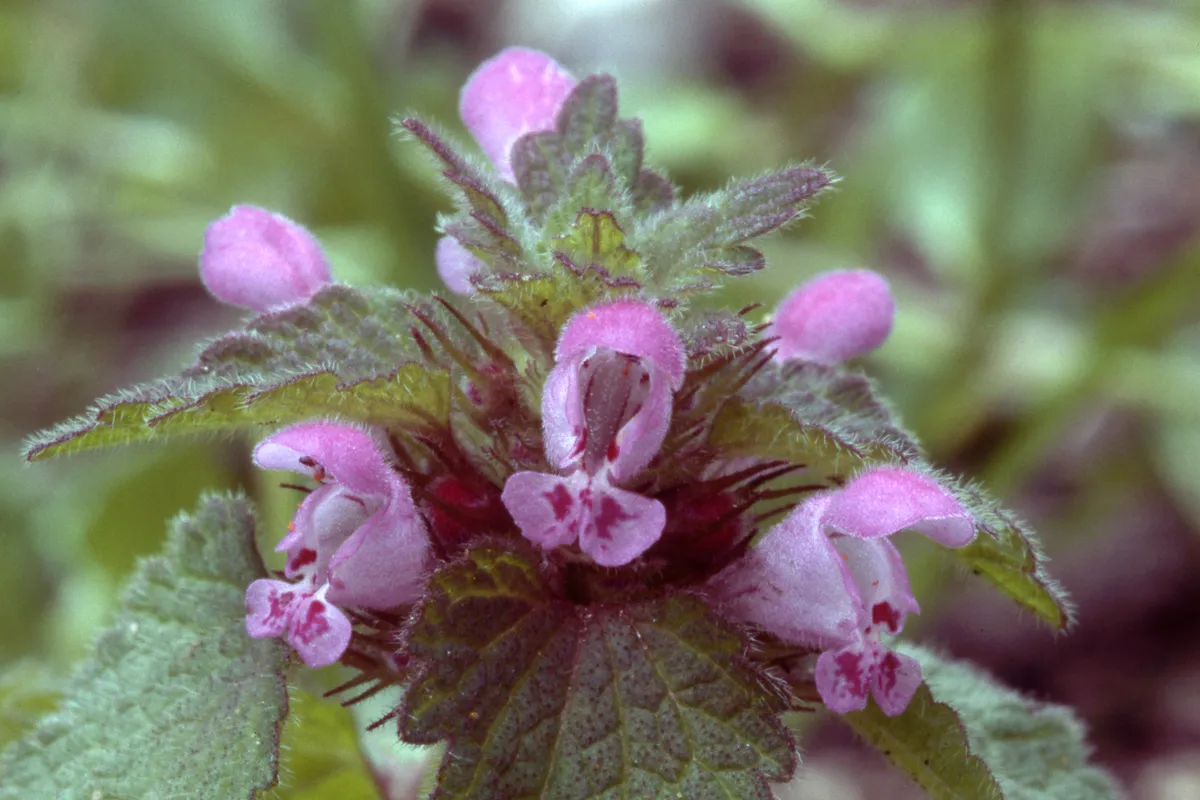
We tend to associate mimicry in the plant world with orchids, famous for copying the appearance and scent of female bees and flies to tempt the males to visit and pollinate them. Some will lure hungry insect pollinators by mimicking foul-smelling dung or corpses.
The red dead- nettle has found a different way to be sneaky: its hairy, saw-edged leaves resemble those of stinging nettles. It’s thought this mimicry helps deter browsing animals. The harmless dead-nettle even grows in the same places as its pain-inducing relative. Two other abundant wayside species, white dead-nettle and yellow archangel, also have lookalike leaves.
Red dead-nettle can be found in flower pretty much all year in the British Isles, but is most noticeable in April and May, before it becomes hidden by taller plants. Its hooded flowers are a hit with bumblebees.
Tawny mining bee (Andrena fulva)
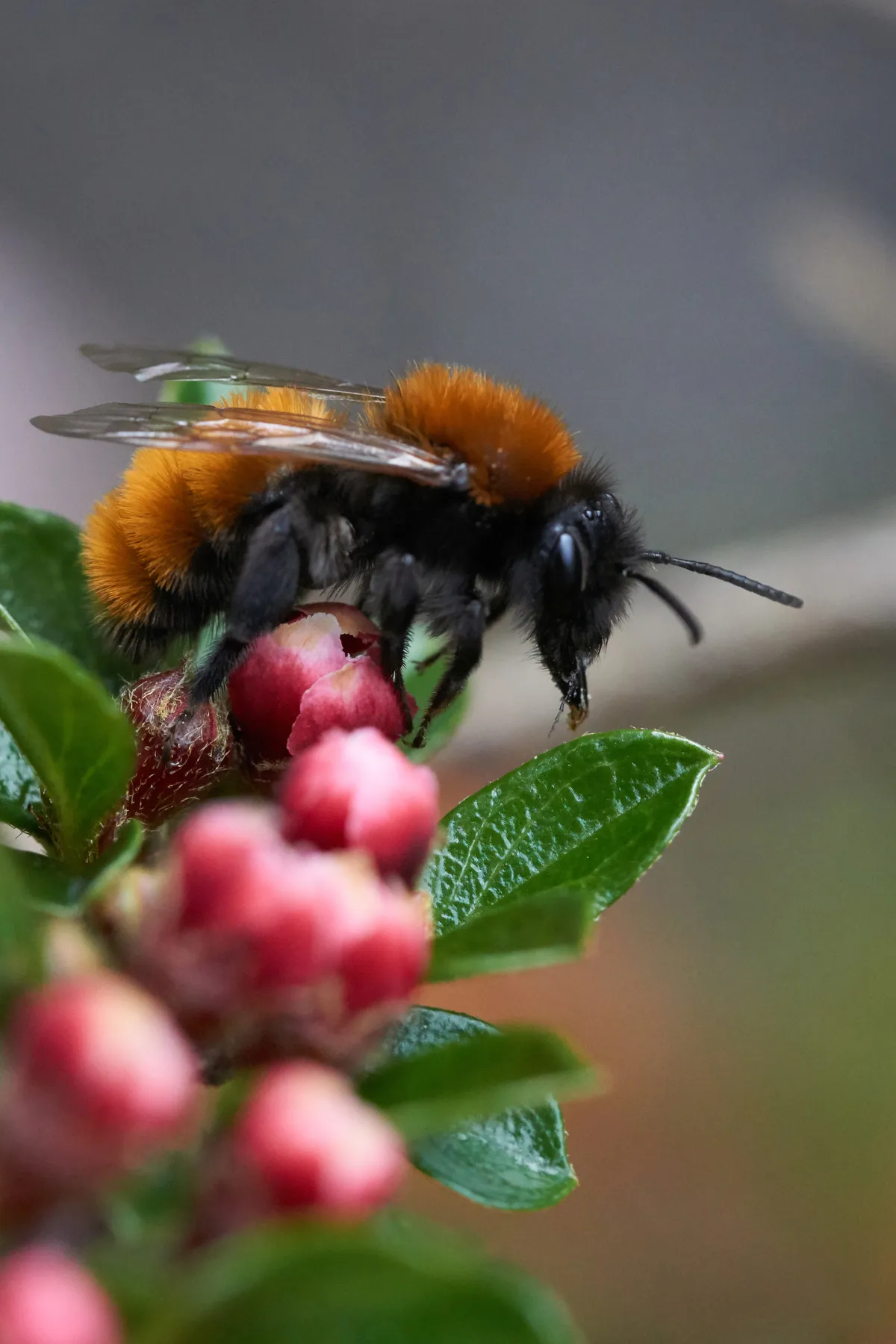
Probably our most striking solitary bee – the female tawny mining-bee – is very active this month. Her furry body is a fabulous shade of foxy orange, offset by a dark face and legs. You’ll see her buzzing around all kinds of flowers, including the blossom of trees such as blackthorn, apple and cherry.
In contrast, the male of the species, resembling a hairier- than-usual honeybee, is easy to miss. Males are smaller and thinner than the females, and their hair is browner.
Solitary bees are only ‘solitary’ in the sense that the females raise their brood in individual nest cells rather than a colony (there is no queen or complex, caste-based social structure). They can, in fact, be quite social and congregate in favourable locations.
Groups of female tawny mining-bees often gather at areas of loose soil, such as sandy lawns, which they need for their nest tunnels. Each has excavated earth heaped around its entrance, like a miniature molehill. The tawny mining-bee is commonly found in gardens and parks throughout most of southern Britain with increasing records in central Scotland.
Least weasel (Mustela nivalis)

Spring is weasel breeding season, though the kits usually won’t venture above ground before May or June. Their father left the scene long ago, so the female has her work cut out to find enough voles and mice to satisfy them. Weasel kits are weaned at three to four weeks, and can make their own kills at eight weeks.
Woodland edges, long grass and rural gardens can be good for weasels, but glimpses of these pocket predators are tantalisingly brief.
Capercaillie (Tetrao urogallus)
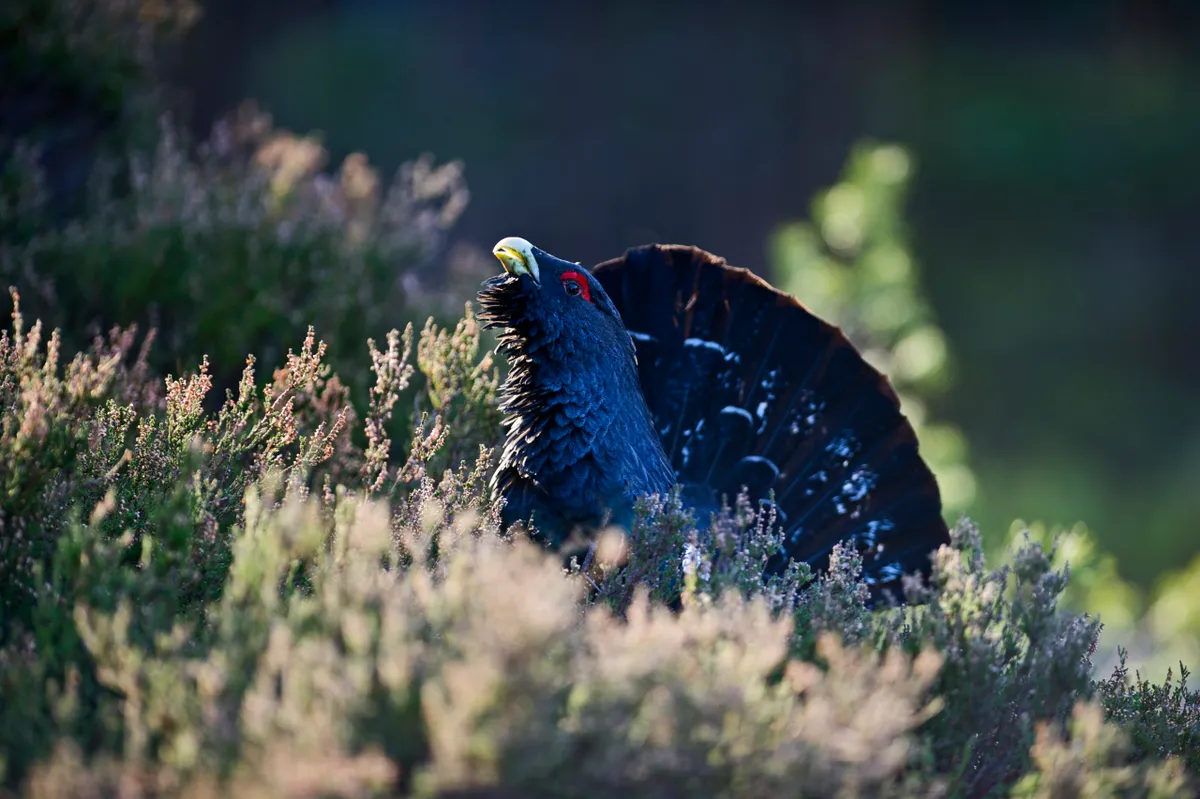
At dawn a handful of ancient pine woods in the Scottish Highlands resound to the group courtship of capercaillies. Males joust theatrically, wheezing like asthmatic turkeys, to wow the females that only turn up a few mornings each spring to watch. Barely 1,000 ‘capers’ remain, mostly in Speyside: dogs off-lead, mountain biking, deer fences and wet summers are taking their toll.
Sea lettuce (Ulva lactuca)
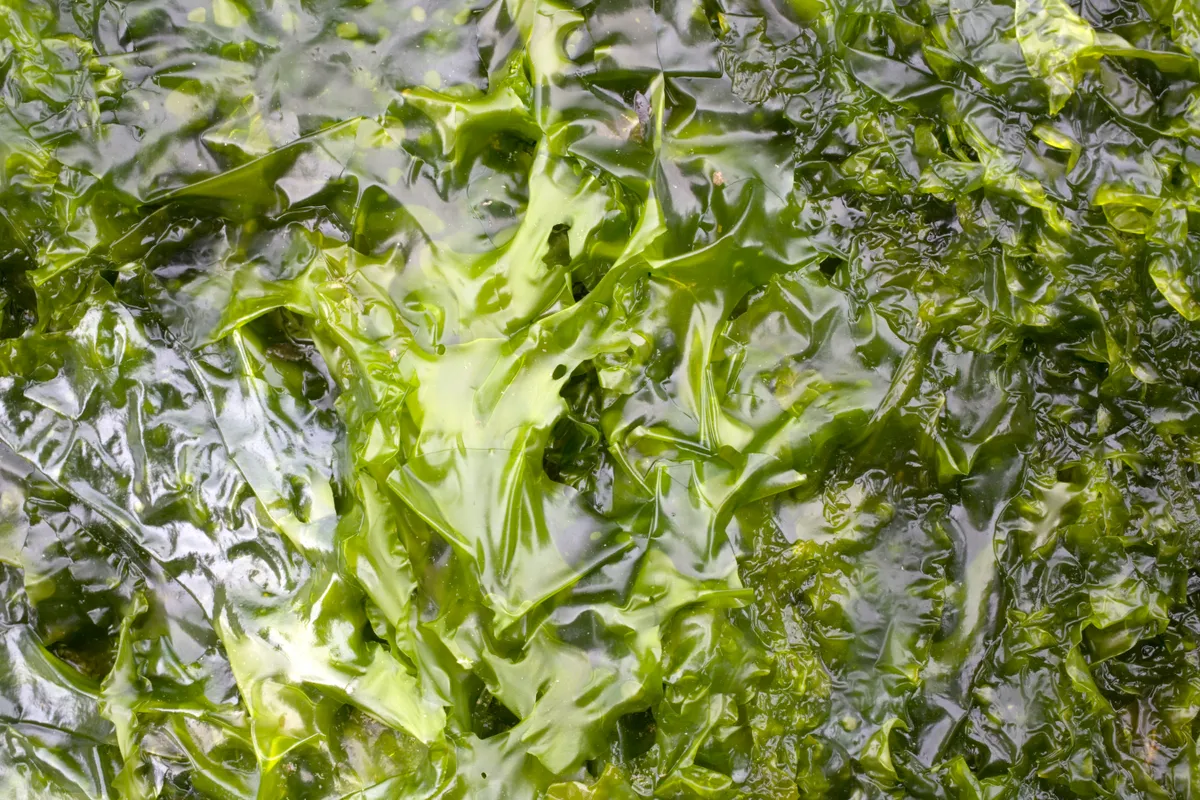
Lurid green and frilly, sea lettuce is a small seaweed that does look remarkably like one of the curly-leaved varieties of lettuce. Also in common with its namesake, it is delicious. The greenery, properly called fronds – as with all marine algae, there are no true leaves – is beautifully translucent. When seen in the still, shallow waters of a rockpool, this species of seaweed almost appears to glow.
While sea lettuce brings a year-round splash of bright colour to Britain and Ireland’s rocky shores, those in the know say it is best harvested now, in early spring. It can be steamed, added to soups or used to wrap parcels of rice. Responsible foragers cut only the top half of a frond, leaving the lower part and its anchor-like ‘holdfast’ in place, so the seaweed can regrow. It is a vital habitat for sea slugs, which love to browse on it.
House martin (Delichon urbicum)
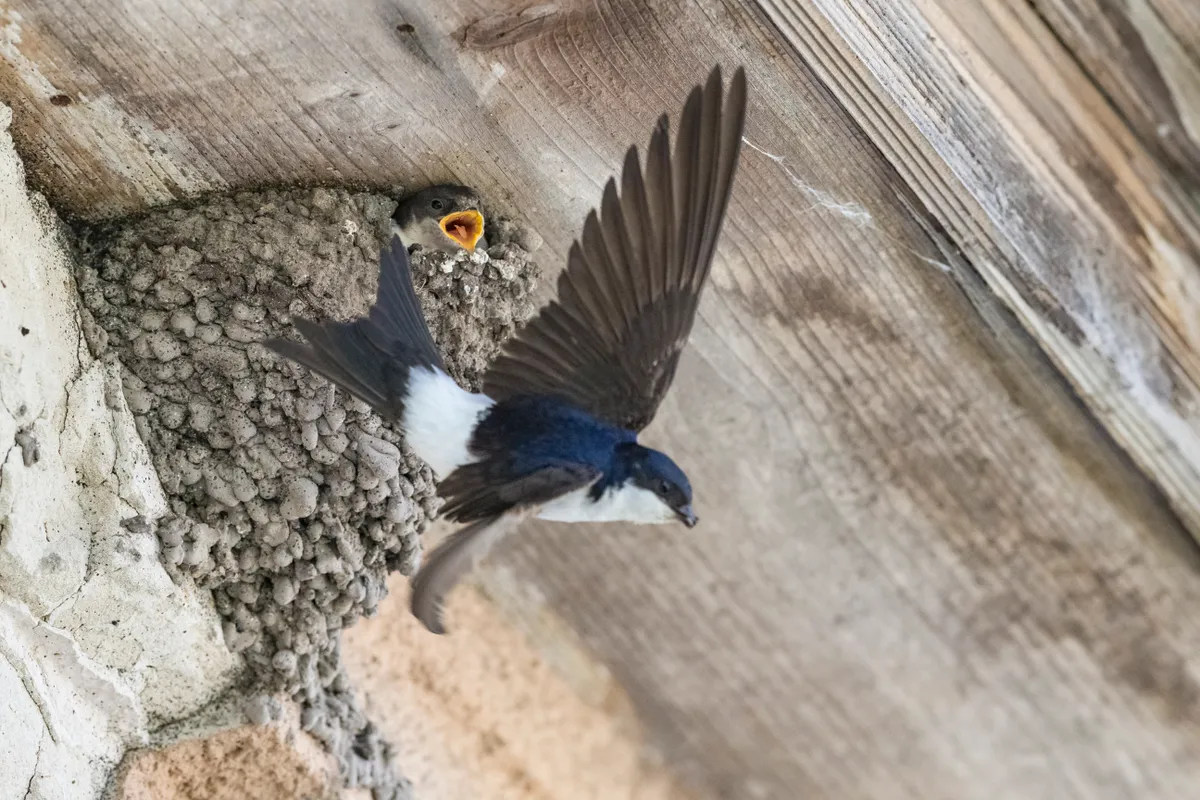
Among the many summer migrants that lift up our hearts in April are house martins, returning to Britain after what invariably seems an age. They have spent the winter in Africa – where exactly, we still don’t know. Our best guess is that they hawk for insects over the rainforests of West Africa.
Sadly, these delightful birds have been added to the UK Red List of threatened species due to a steep population decline. A key factor in their demise could be the switch to plastic soffits. This deprives martins of traditional nest sites under house eaves and gutters, and research by the BTO shows that pairs that do attempt to nest on PVC have less success, perhaps because their mud cups are prone to fall off.
Installing artificial nests may help, and might encourage martins to colonise a building. But they prefer to construct their own homes, which takes 10 days and about 1,000 billfuls of mud.
Golden eagle (Aquila chrysaetos)
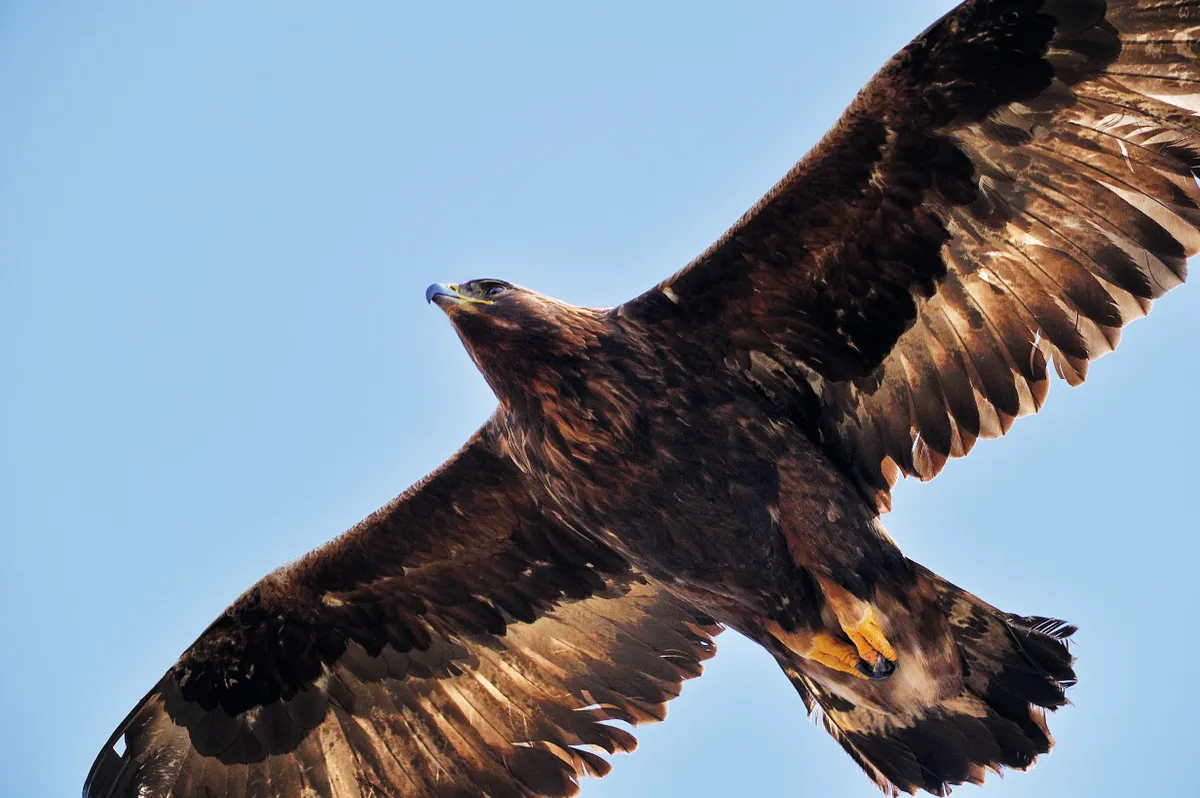
Fine spring days are at a premium in the Scottish Highlands and islands, but offer one of the best chances of seeing golden eagles. These magnificent raptors, with a head and nape the colour of single-malt, may be glimpsed cresting peaks and gliding along ridgelines, oozing confidence from every primary feather.
As the poet Kathleen Jamie notes in her 2019 book Surfacing, eagles have a unique presence on the wing: “What marks them out is the way they treat the air: as a resource, a birthright, theirs in never-ending abundance.”
By April, mated females will be hunkered down on a pair of eggs at the eyrie, a commanding rocky ledge sometimes used by generations of eagles. But their mates will be patrolling the territory and hunting for two, so more visible than usual. If you’re lucky, you might see a male ‘sky dance’. The rollercoaster series of dives and climbs is part courtship but mostly a signal to other eagles that this area is taken.
Today, Scotland has about 500 breeding pairs and, were it not for persecution, could support rather more. A reintroduction project underway in Dumfries and Galloway might be the first of several that will help these phenomenal birds reclaim their former haunts.
Cuckooflower (Cardamine pratensis)
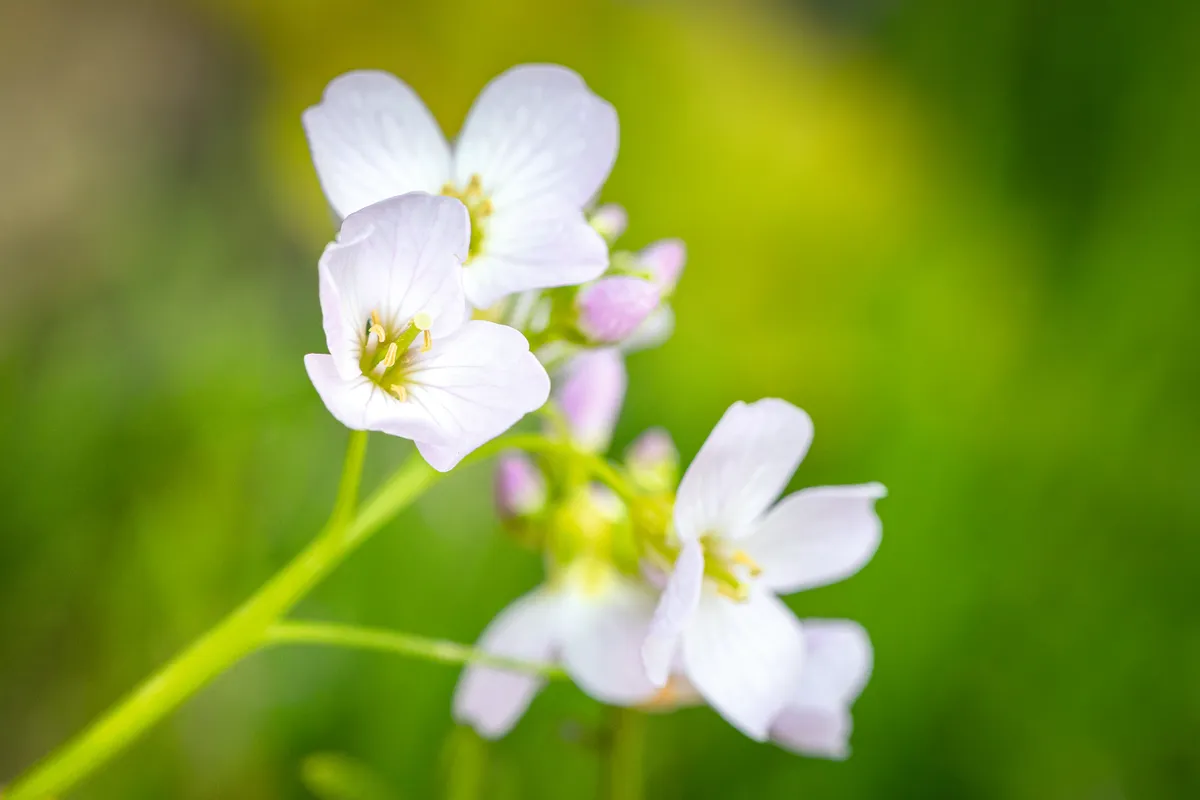
With spring’s return, thousands of volunteers across the UK have begun collecting data on their local wildflowers, as part of the National Plant Monitoring Scheme (NPMS) run by Plantlife and several partners. This habitat-based survey involves searching for a selection of classic ‘indicator species’.
In damp grassland and meadows, cuckooflower, or lady’s smock, is one of the species people will be looking for. It’s a beautiful, delicate plant, with pale-pink flowers on top of a spindly stem. Two common butterflies lay their eggs on it: the green-veined white and orange-tip.
Early bumblebee (Bombus pratorum)
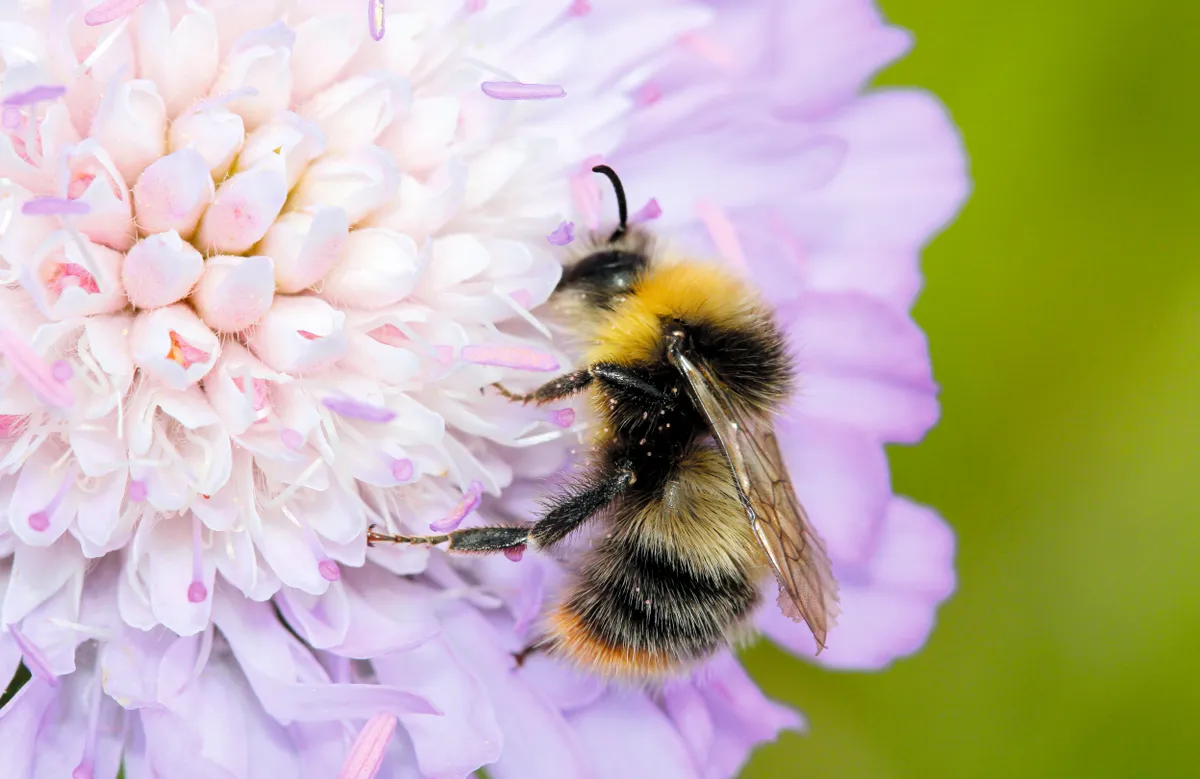
This common little bumblebee – the smallest species in the British Isles – does what it says on the tin. It not only emerges early, but also starts nesting early. At first, you see only queens, then only female workers, and finally, from mid-April, you start seeing males, too.
All have distinctive orange tails, while the males also have a lemon-yellow ‘cummerbund’ across the abdomen and luxuriant yellow facial hair. In Dancing with Bees, Brigit Strawbridge Howard observes that males are “small, rotund and kind of scruffy”, compared to females, yet “ridiculously cute”.
Common bluebell (Hyacinthoides non-scripta)
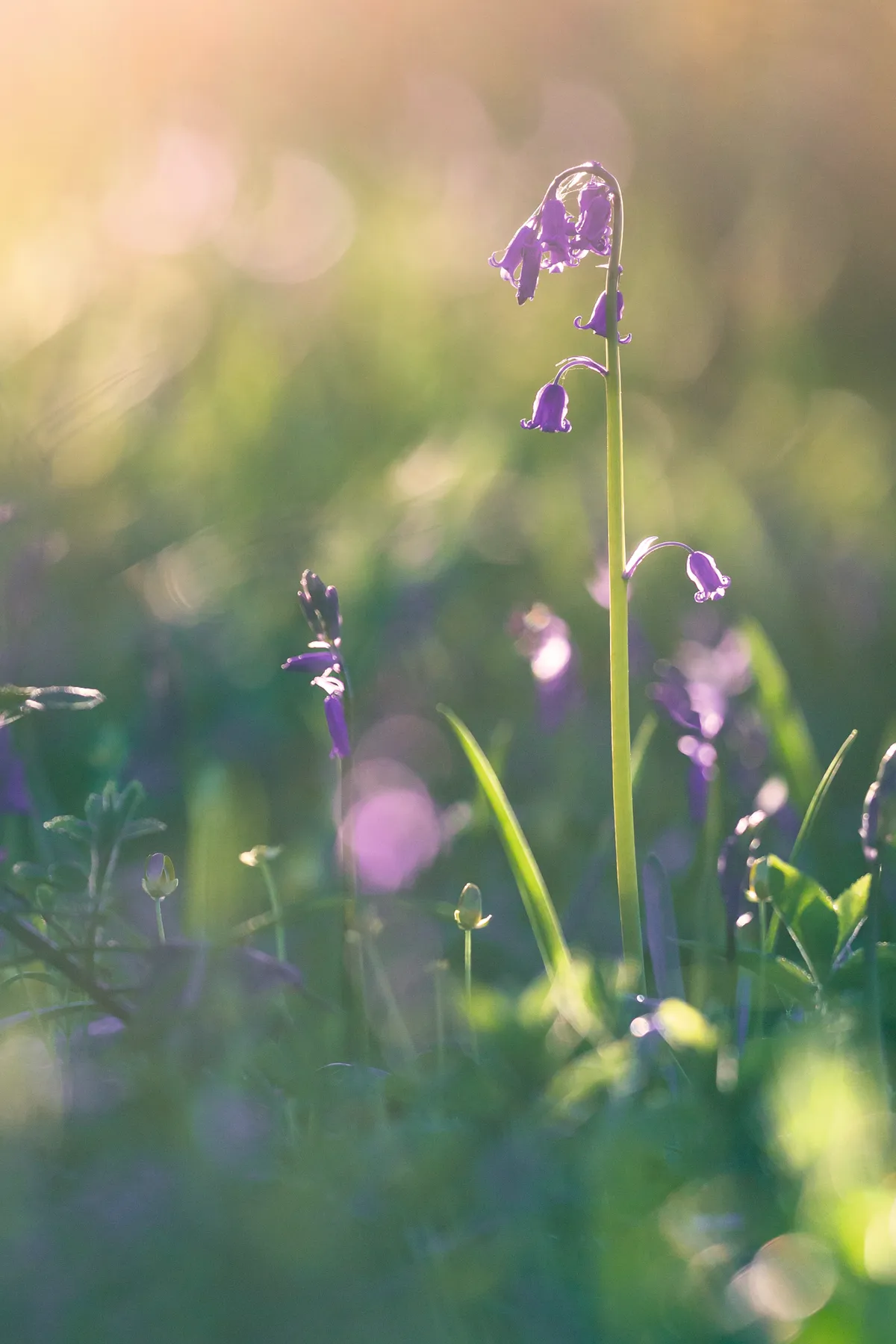
Many wildflowers are now blooming earlier, and the first flowering of bluebells has advanced by at least 17 days since 2001, according to data from the Nature’s Calendar survey. Shimmering seas of bluebells are associated with ancient woodland, especially if the soil is damp and rich, though they also grow along hedges and even on open hillsides.
One of the most spectacular displays is on the island of Skomer, off West Wales. The sweet-scented flowers are best appreciated on bright but overcast days – take care not to stray from paths and trample them.
Learn more about bluebells and wildflowers:
White stork (Ciconia ciconia)
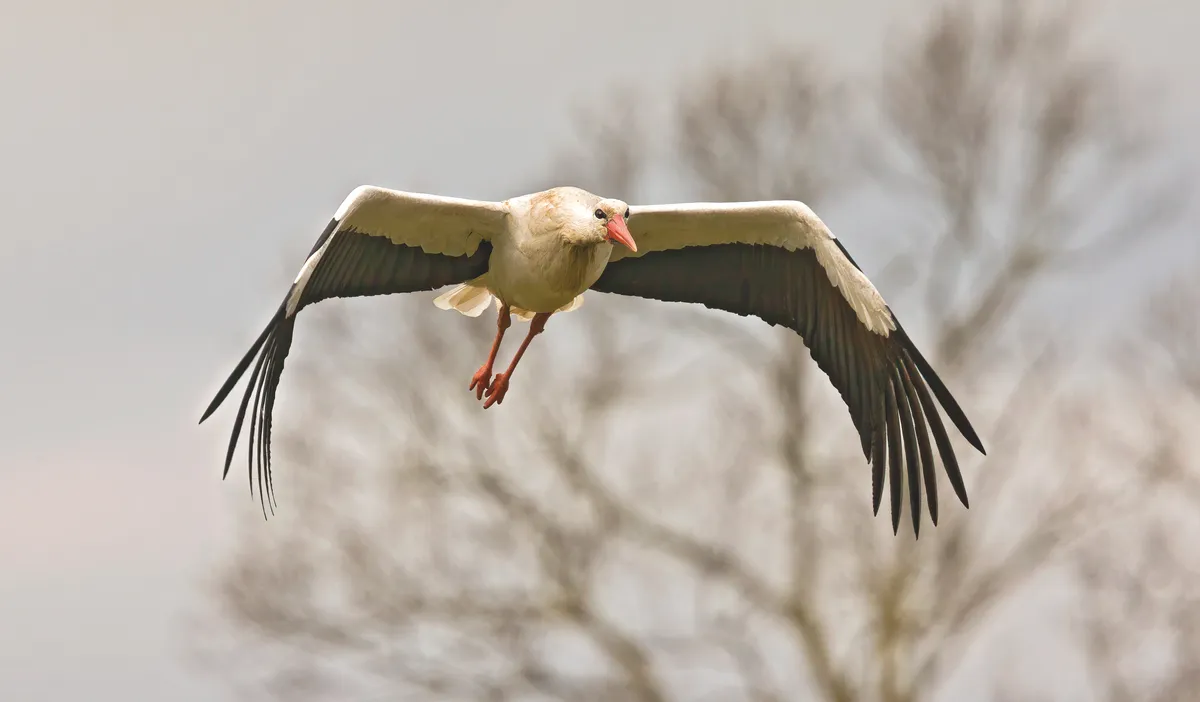
Swallows and cuckoos have long been heralds of spring, but now we can cross our fingers for an eyeful of something larger: white storks cruising north over the English Channel on 2m-wide wings.
The birds were reintroduced to Sussex in 2019–2020, and in September some migrated south to Spain and Africa for the winter. They have been tracked mingling with flocks of wild storks from other parts of Europe – good news for the project’s long-term success.
It is not clear when white storks died out in Britain, though Benedict Macdonald points out in Rebirding that they fetched big money in London’s game markets as late as the 16th century. After the first successful nesting of reintroduced birds at the Knepp estate in 2020, the hope today is that the new population will soar past 50 breeding pairs within a decade.
Critics argue that white storks are thriving in the rest of their range, and that glamorous species reintroductions detract from the true purpose of rewilding. But there’s no doubt that these birds lift our morale and engage the public in conservation.
The scientific name of the white stork, Ciconia ciconia, is an example of a tautonym, where the genus and specific name are the same.
Wood sorrel (Oxalis acetosella)
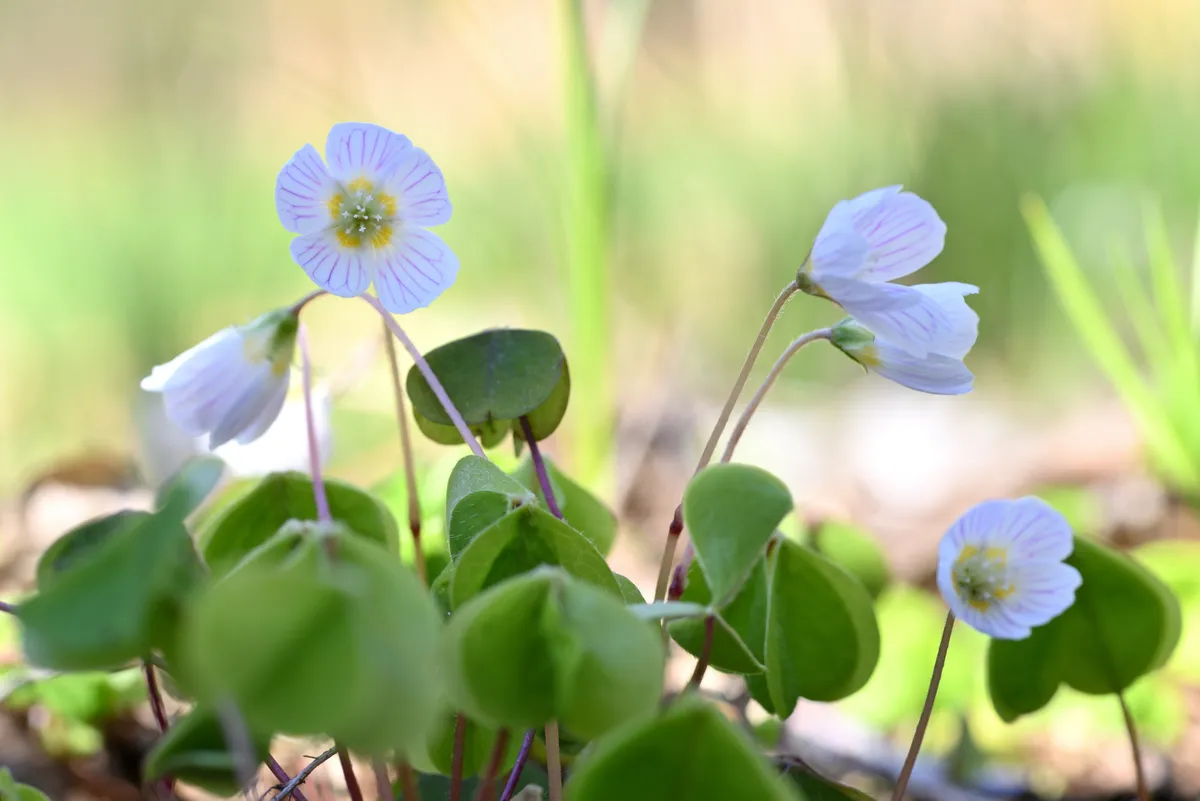
Humans can pick out more shades of green than any other colour. We are, says science writer and garden designer James Wong, “born to be botanists”. Look for patches of zingy, yellowish-green if you visit an old, undisturbed woodland this month. They are clumps of wood sorrel, whose heart-shaped leaves are arranged three per stem.
Chew one: the lemony tang is caused by oxalic acid. You can sprinkle a few over salad, but don’t overdo it. In April, you’ll also see sorrel’s delicate white flowers, patterned with pink veins.
Goldcrest (Regulus regulus)
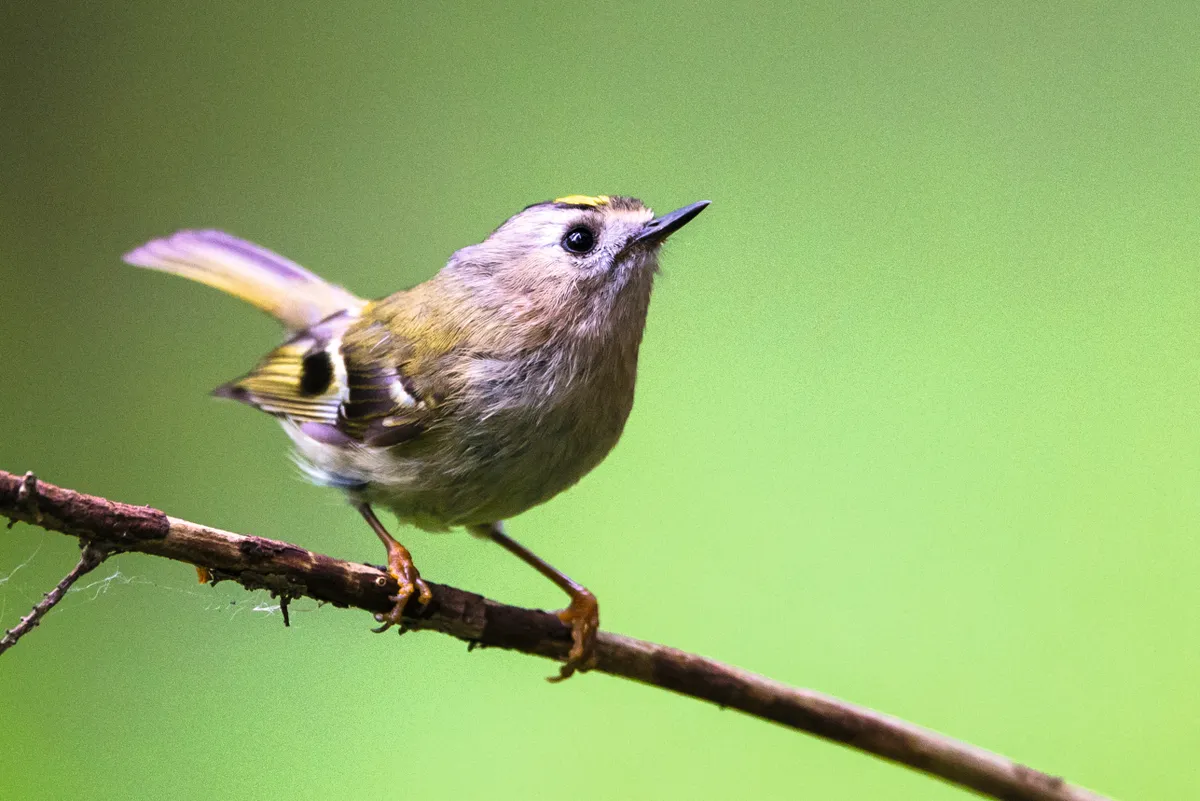
Tiny the 6g goldcrest may be, but come spring it’s one of the birds most likely to attack its own reflection in a window. Pugnacious birds strike the panes of glass repeatedly, in a desperate bid to defend their territory.
Now is the height of the nesting season. Among British and Irish birds, the goldcrest produces the smallest nest and eggs – a record it shares with the related but much scarcer firecrest. An incubating female helps to warm her clutch with her legs, after first pumping them with blood – an unusual tactic for a passerine.
The scientific name of the goldcrest, Regulus regulus, is an example of a tautonym, where the genus and specific name are the same.
Orange-tip butterfly (Anthocharis cardamines)
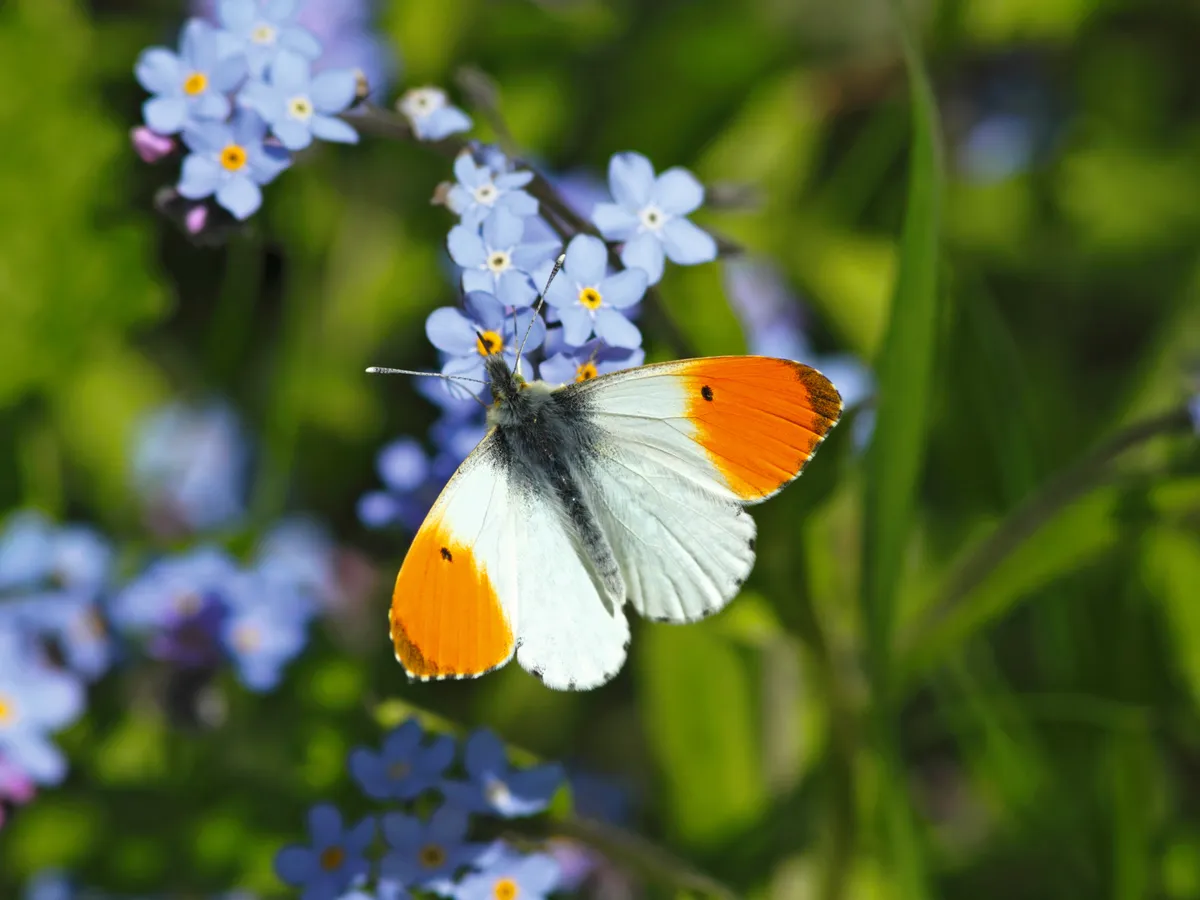
The male orange-tip, with his ‘fluoro’ wingtips that appear to have been dipped in paint, and his habit of endlessly patrolling up and down, is pretty hard to miss. That’s the whole point: the coloration warns birds that these butterflies are stuffed with toxic plant oils ingested as caterpillars.
The female lacks such striking upper-wings, so is easy to confuse with another member of the family – the small white. In fact, you may have to search her out, as she tends to lurk among vegetation.
Bloody-nosed beetle (Timarcha tenebricosa)
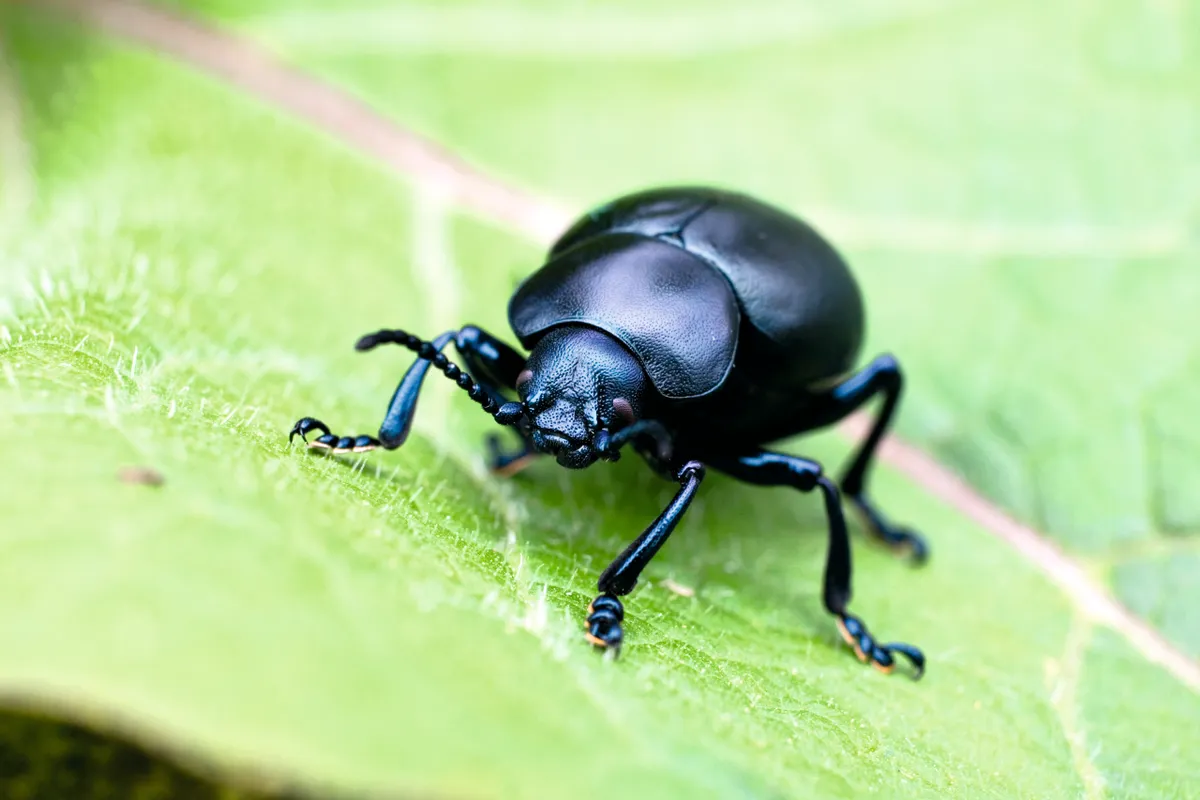
Everyone with beetlemania – and that really ought to include all wildlife lovers – can now start indulging their passion again. One species to keep an eye out for in April is this chunky, armoured beetle, which overwinters in the soil as an adult. Look for it emerging across the southern half of Britain, as it trundles over grassland, paths and other open ground.
The bloody-nosed beetle’s strange name comes from its defence: droplets of foul red liquid (actually haemolymph, or insect blood) that it squeezes from its jaws if alarmed.
Learn more about beetles in the UK:
Great crested newt (Triturus cristatus)
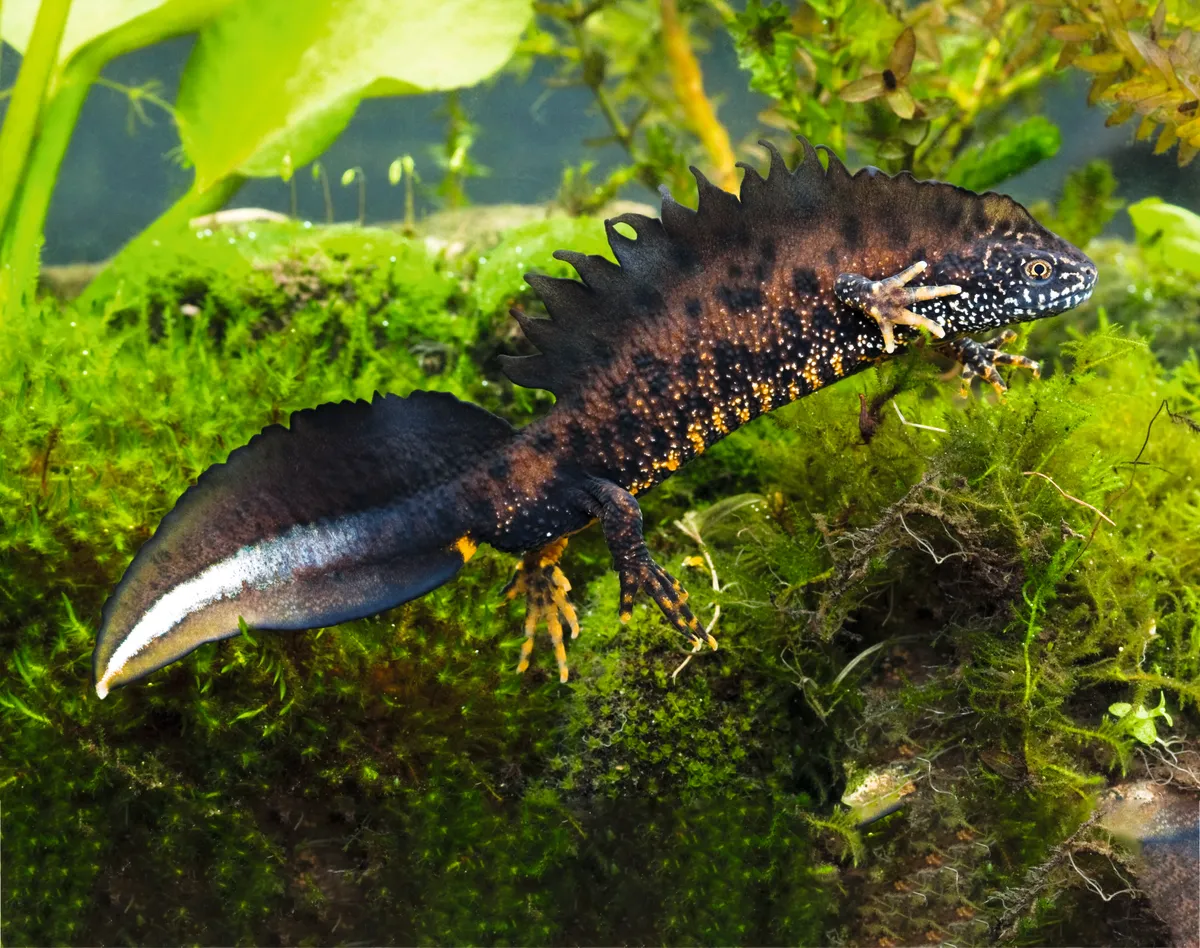
With its rough skin and (only in males) ragged crest, the great crested newt is Britain’s most impressive amphibian, though it is also an animal that property developers love to hate.
In March and April, it returns to its strictly protected breeding sites, favouring bigger ponds than our two other newt species. However, finding one can be tricky. Wessex Water famously employs a newt-detection dog, while ecologists sample water for environmental DNA (eDNA).
But there is another way. On mild evenings, scan suitable-looking ponds with a torch, focusing the light on the muddy shallows.
Learn more about great crested newts and amphibians:
Dandelion (Taraxacum genus)
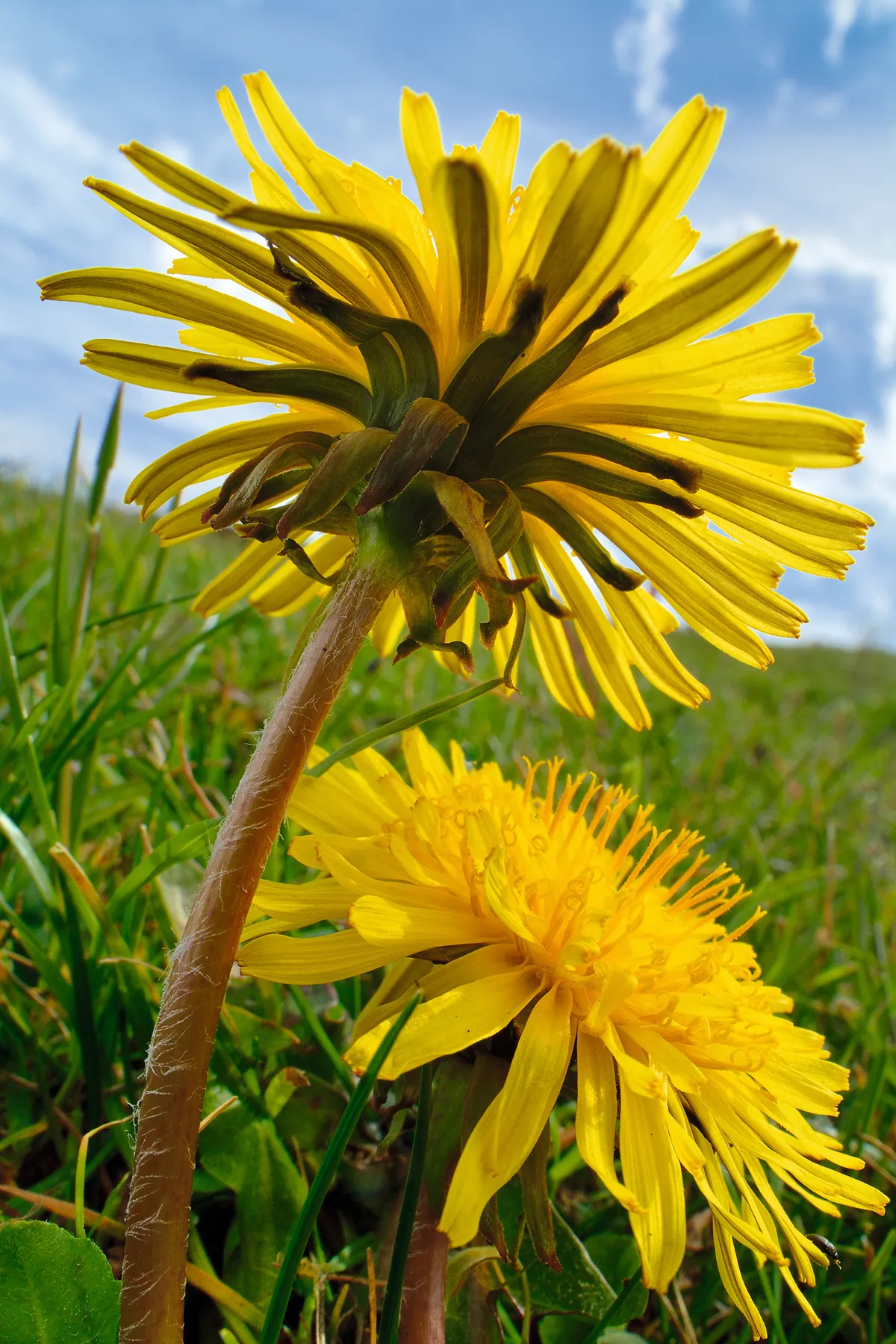
In spring, road verges, roundabouts and other grassy places that have escaped herbicides – often in the so-called ‘wild belt’ surrounding urban areas – are transformed into galaxies of yellow suns.
Each dandelion flowerhead is made of up to 100 florets, and their nectar flow peaks in late morning. Just eight dandelions provide enough for 15,000 bee visits per day.
Young naturalist and award-winning author Dara McAnulty has called these prolific weeds “small pockets of wild resistance” in recognition of their importance to pollinators in a world dominated by intensive farming.
Foraging recipes using dandelions:
Common toad (Bufo bufo)
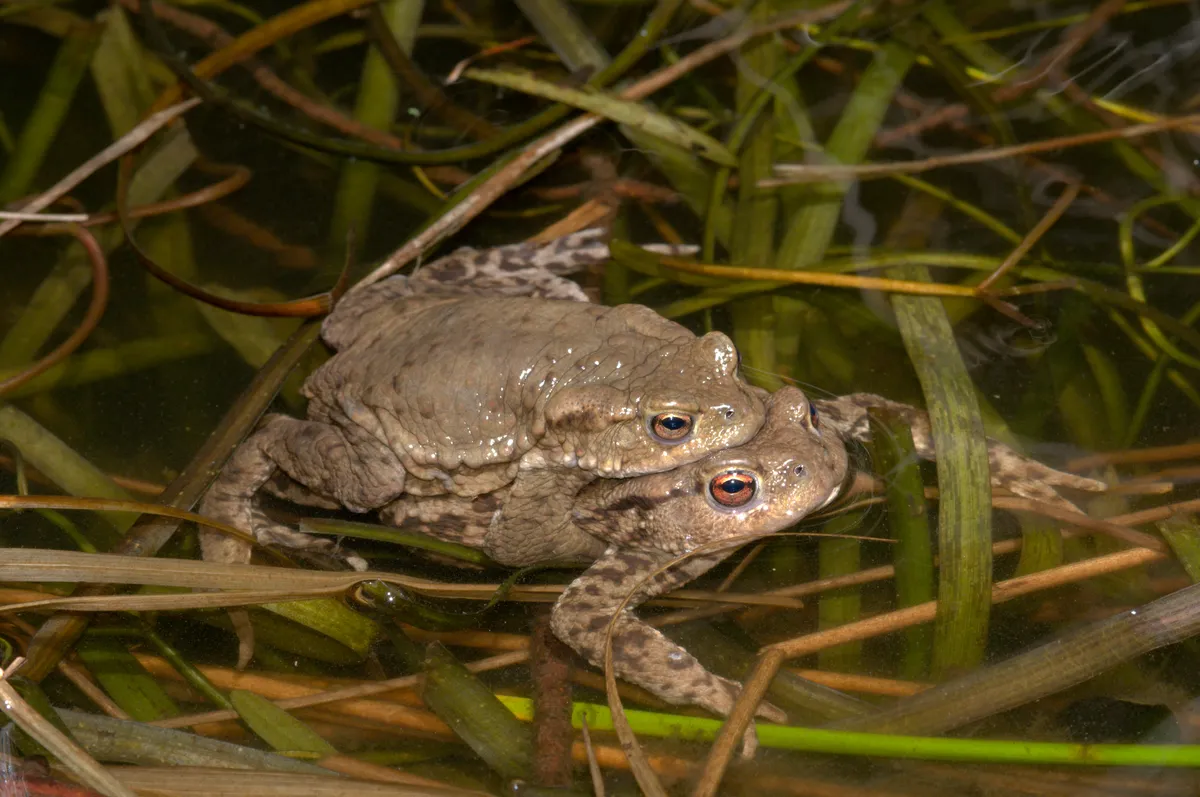
Never has the phrase ‘hanging on for dear life’ been more apt. This photograph of a male toad gripping his partner with all his might speaks volumes about the biological imperative to pass on your genes.
So powerful is the urge driving this pumped- up amphibian, he might have grabbed any suitable object in range, were no female available. Male toads have been known to seize other male toads, frogs, small fish, tennis balls floating in the water, even the hands of volunteers running toad crossings on busy roads. Sometimes several males will all pile on, forming waddling scrums.
The no-nonsense mating position is known as amplexus, from the Latin for ‘embrace’, and is used by toads and frogs worldwide. In many species, the mature male has special adaptations to strengthen his grip; the male common toad, for instance, has a spiny ‘nuptial pad’ on each thumb. This looks like a dark extension to the three inner fingers, and can be used to determine a toad’s sex.
The other clue, perhaps more obvious, is size – female toads are much bigger, especially in spring when their bellies bulge with unfertilised eggs.
After mating, threads of fertilised toadspawn are left like dark necklaces among the water weed.
The scientific name of the common toad, Bufo bufo, is an example of a tautonym, where the genus and specific name are the same.
Find out more about frogs and toads in the UK:
Cuckoo (Cuculus canorus)
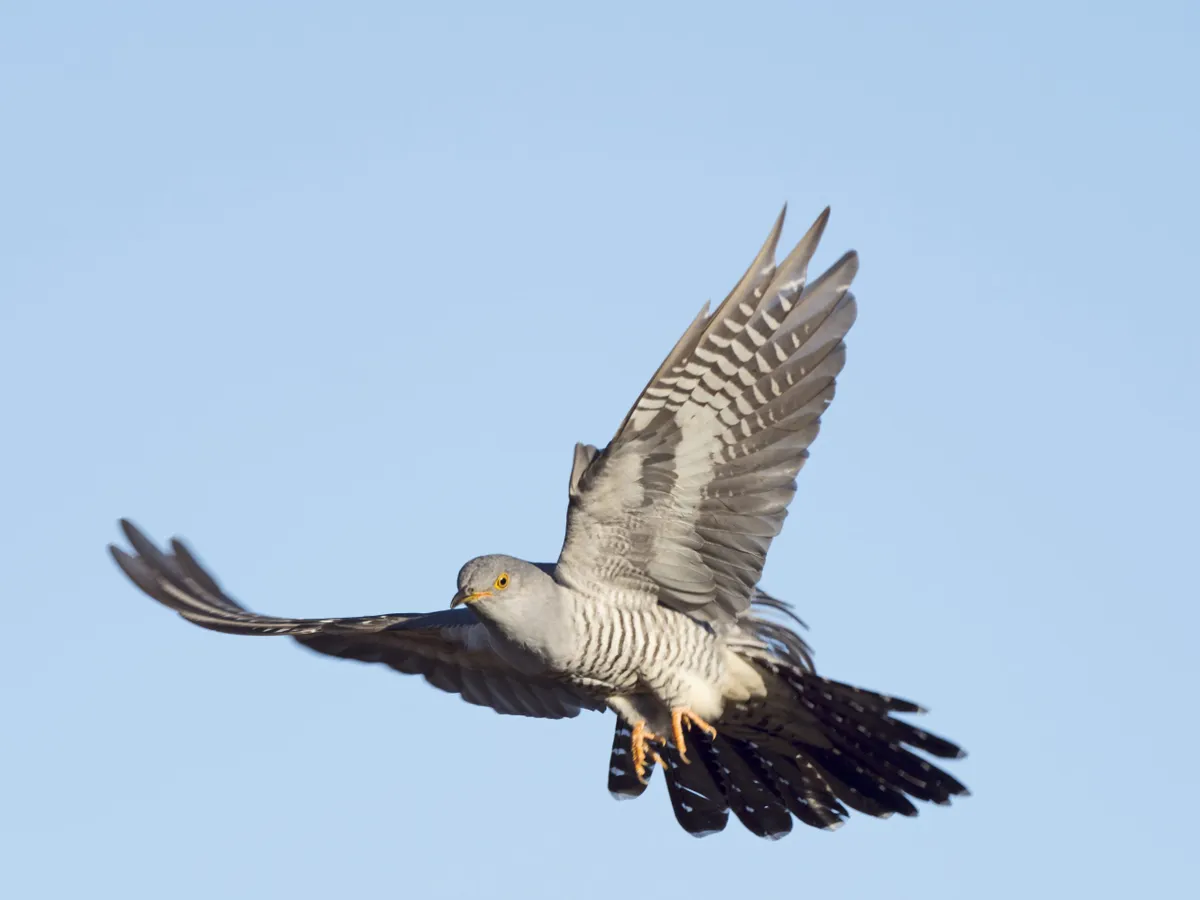
April 2020 was the 250th anniversary of the birth of Wordsworth, whose celebrated ode to the cuckoo includes this verse: “While I am lying on the grass/Thy twofold shout I hear/From hill to hill it seems to pass/At once far off, and near.”
What the nature poet captures so beautifully is the species’ mercurial nature, as if the male bird is taunting us as he moves between different song-posts.
Cuckoos are now scarce in Britain: most that are left breed in large wetlands, or in the uplands of Wales and Scotland.
Find out more about cuckoos:
Angle shades moth (Phlogophora meticulosa)

One of our most distinctive garden moths, this pink-green- and-brown beauty mimics dead leaves, with curled wingtips that heighten the illusion of shrivelled foliage.
Its long flight season traditionally starts in late April or May. But the Atlas of Britain and Ireland’s Larger Moths – the recently published ‘moth bible’ based on over 25 million records – shows that, like many species with two broods per year, the first generation of adults is emerging ever earlier. This is probably a response to climate change.
Water vole (Arvicola amphibius)
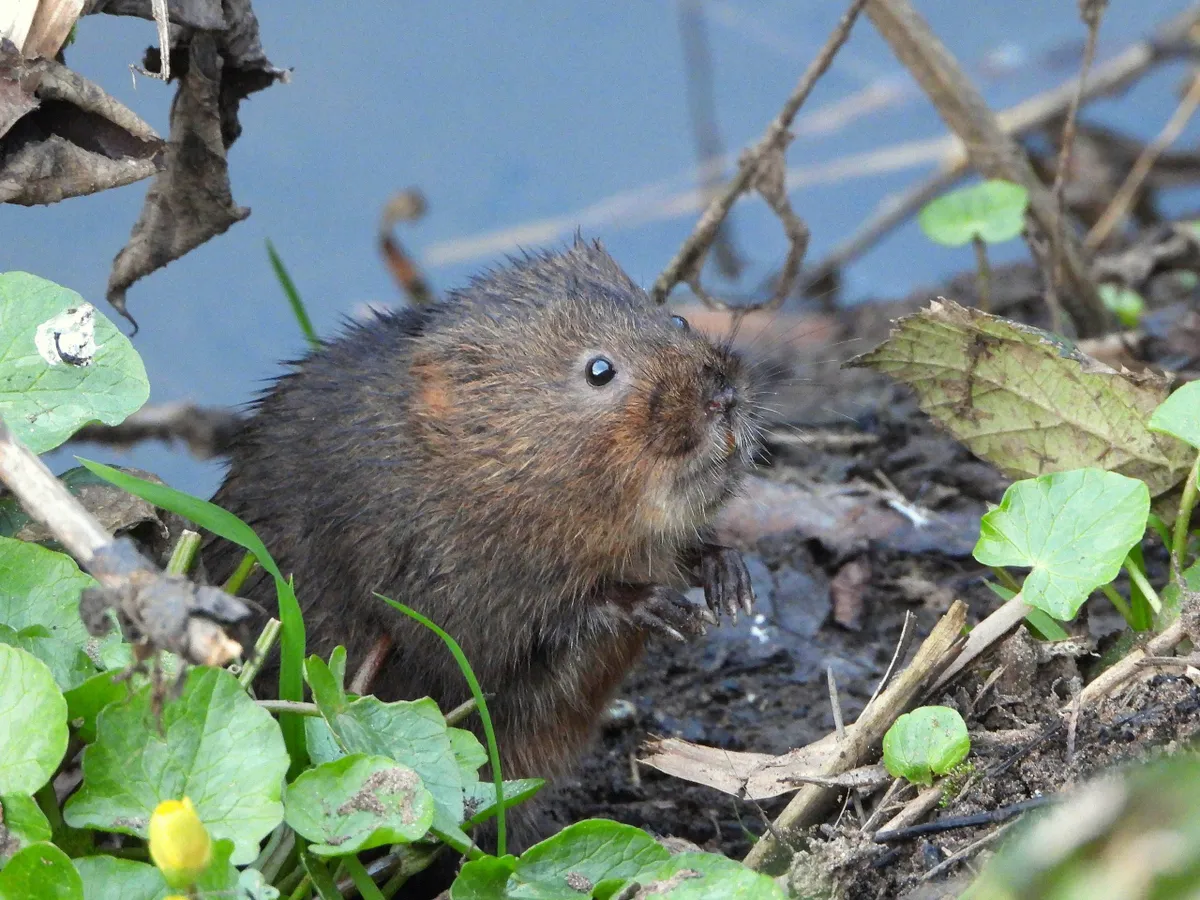
Searching for ‘Ratty’ is an ideal opportunity to enjoy some mindfulness in nature. That’s because your best bet is to sit down by still or slow- moving water in a tranquil wetland... and wait.
Voles like a steep bank for burrowing, though it doesn’t have to be very high, and each territory is quite small – sometimes as little as 25–50m of bankside.
Within this, they have favourite picnic spots, where they sit munching sedges, water crowfoot, horsetail and other lush greenery. Few water voles survive outside conservation areas, so head to a wetland reserve or canal where they’re known to be active.
Early purple orchid (Orchis mascula)
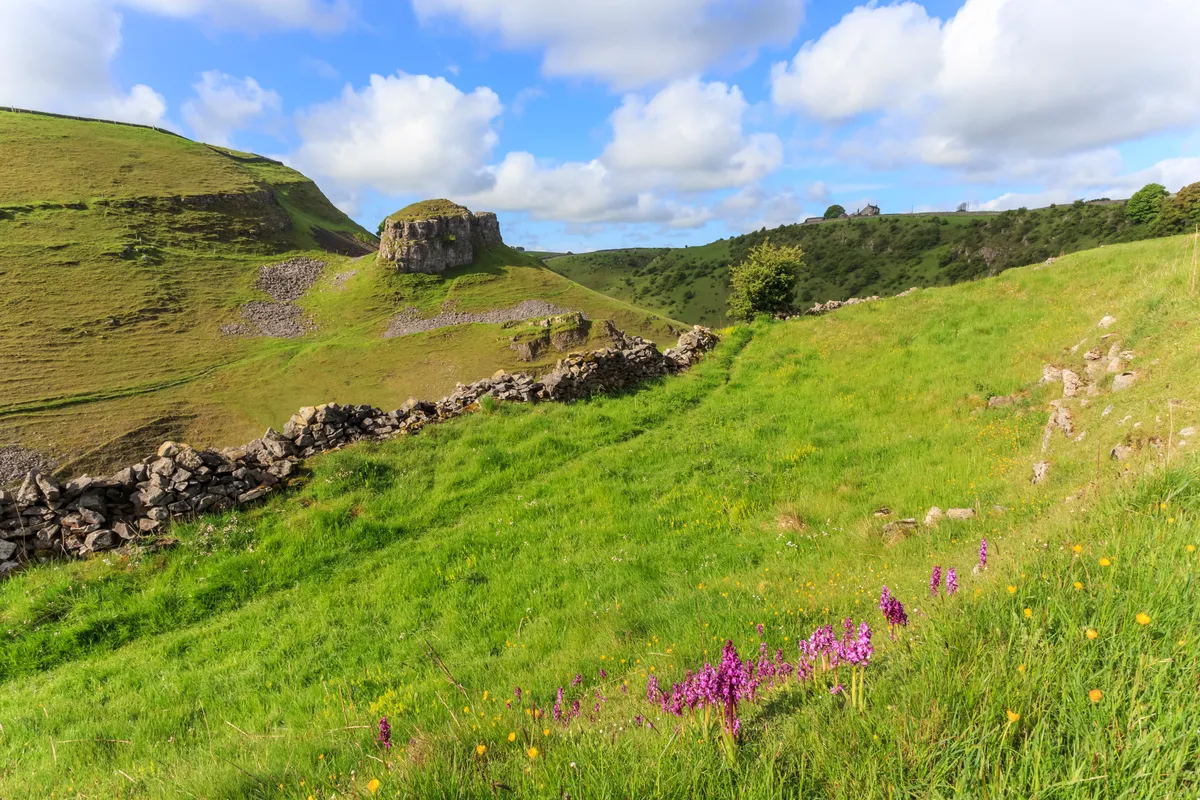
This regal wildflower does exactly what it says on the tin, and not only is it one of the first orchids to appear in spring, it’s also among the most abundant members of its famous family. You’re most likely to see it in sunny places in woods, but it also grows beside roads and on grassy hillsides, flowering until June.
Its leaves have purplish-brown blotches, as if splashed with paint, though this isn’t unique – the leaves of the common spotted orchid look similar.
Willow warbler (Phylloscopus trochilus)
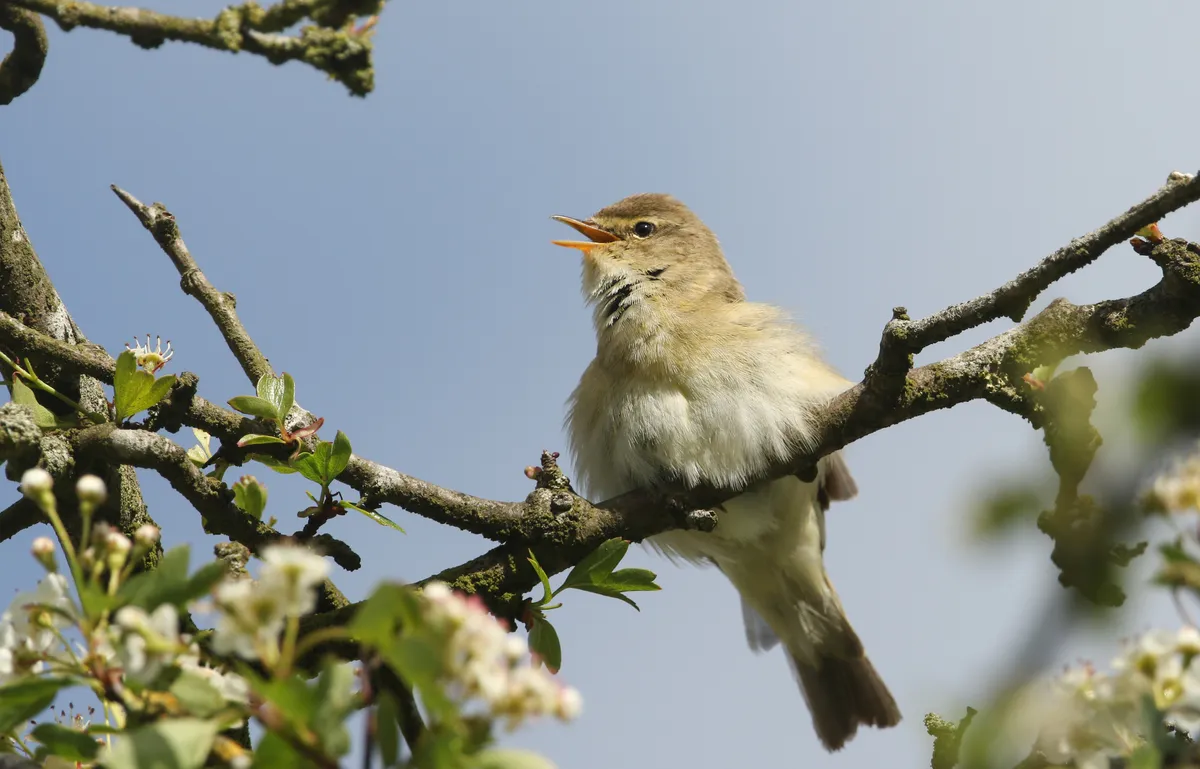
“It is always exciting to see even a common migrant, like a willow warbler, being a migrant,” writes nature writer Tim Dee in his book Greenery. “Birds out of place get birders going.”
Willow warblers are, above all, woodland birds. They’re particularly fond of birch-covered hillsides, but on spring migration turn up tired and hungry in odd locations.
In April, you might hear their glorious, cascading song anywhere from coasts to gardens. Up to 1,000 million of these sprites head to Europe from Africa each spring.
Ashy mining bee (Andrena cineraria)
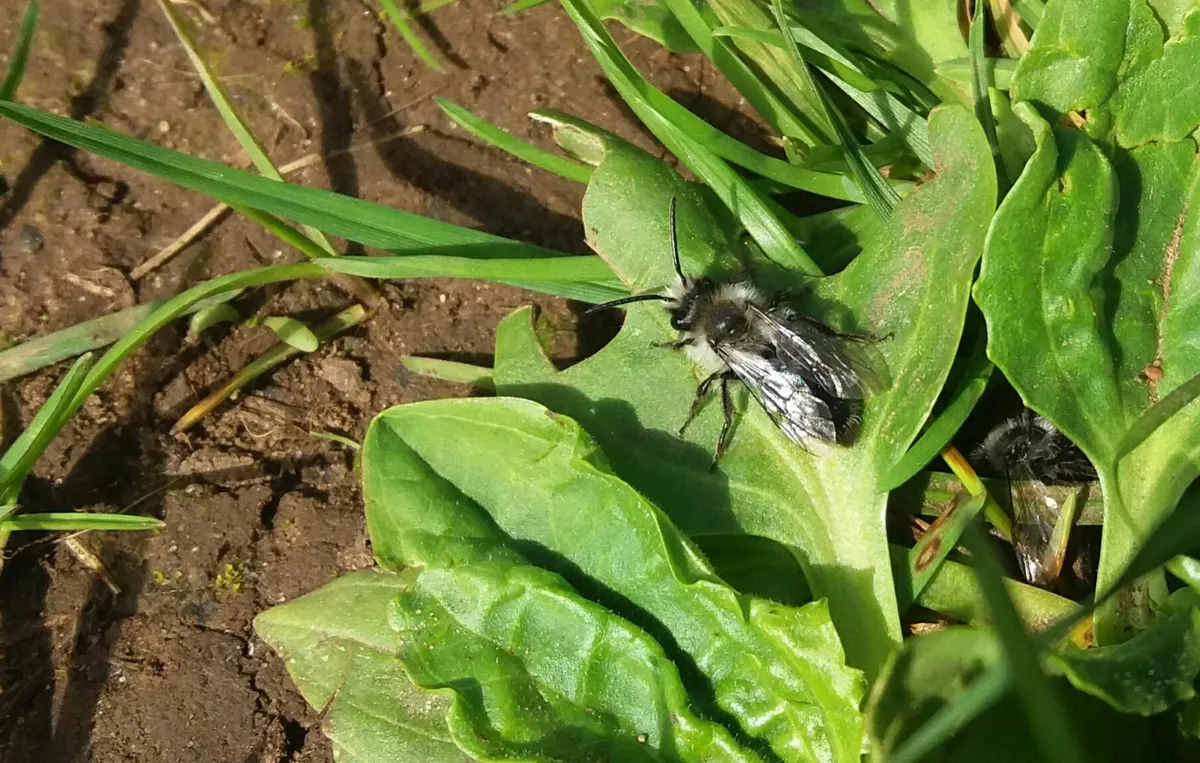
Scuffed-up ground is surprisingly important for wildlife, including great British rarities such as sand lizards, oil beetles, field crickets and stone curlews. It’s worth paying attention to those bare patches of ‘dirt’ in your lawn or neighbourhood park.
One species you might meet here is the ashy mining bee – the snow leopard of bees. Females dig nest burrows close together, and their pockmarked ‘bee cities’ occupy the same spots each year – there’s one in some scruffy roadside grass near the BBC Wildlife office.
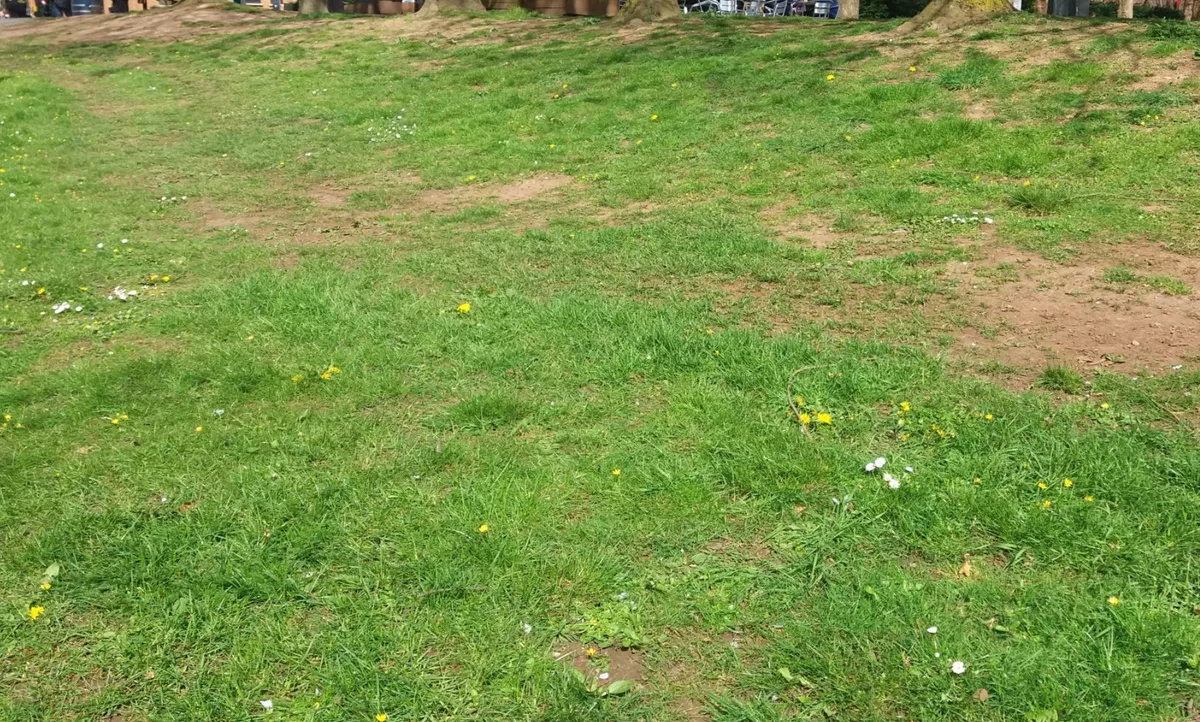
Find out more about bees:
European rabbit (Oryctolagus cuniculus)
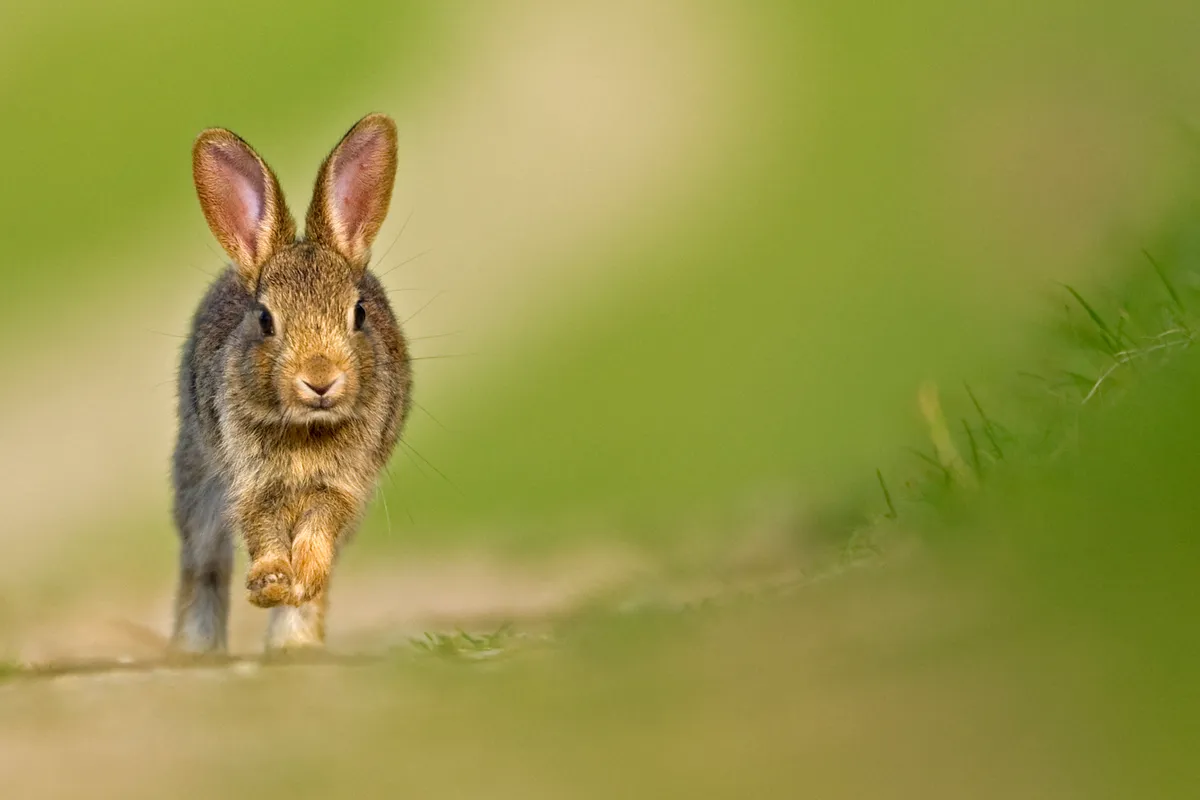
Anyone who grew up with the tales of Peter Rabbit and Benjamin Bunny is likely to have a sneaking admiration for their naughtiness and joie de vivre. But Beatrix Potter’s stories have a darker side, too – some of the characters’ relatives ended up in pies.
For wild rabbits in Britain, this is closer to the reality: the odds are that their life will be nasty, brutish and short. Studies have shown that 70–95% of rabbits perish in their first few months. Kits born early, during the first flush of spring, have the best chance of seeing out the year.
Young rabbits face danger in all directions, including from buzzards in the air, and from foxes, polecats, badgers, stoats and even tiny weasels on the ground. Currently, there is also the double whammy of myxomatosis and haemorrhagic disease.
Together with agricultural intensification, this has led to a decline in rabbit numbers of between a half and two-thirds since the 1990s. This matters because the close-cropped sward and bare areas of scuffed earth maintained by these ‘lawnmowers’ is an important habitat for scarce species, such as stone curlews, woodlarks, sand lizards, and Adonis and large blue butterflies.
Find out more about rabbits and hares:
Wood anemone (Anemone nemorosa)
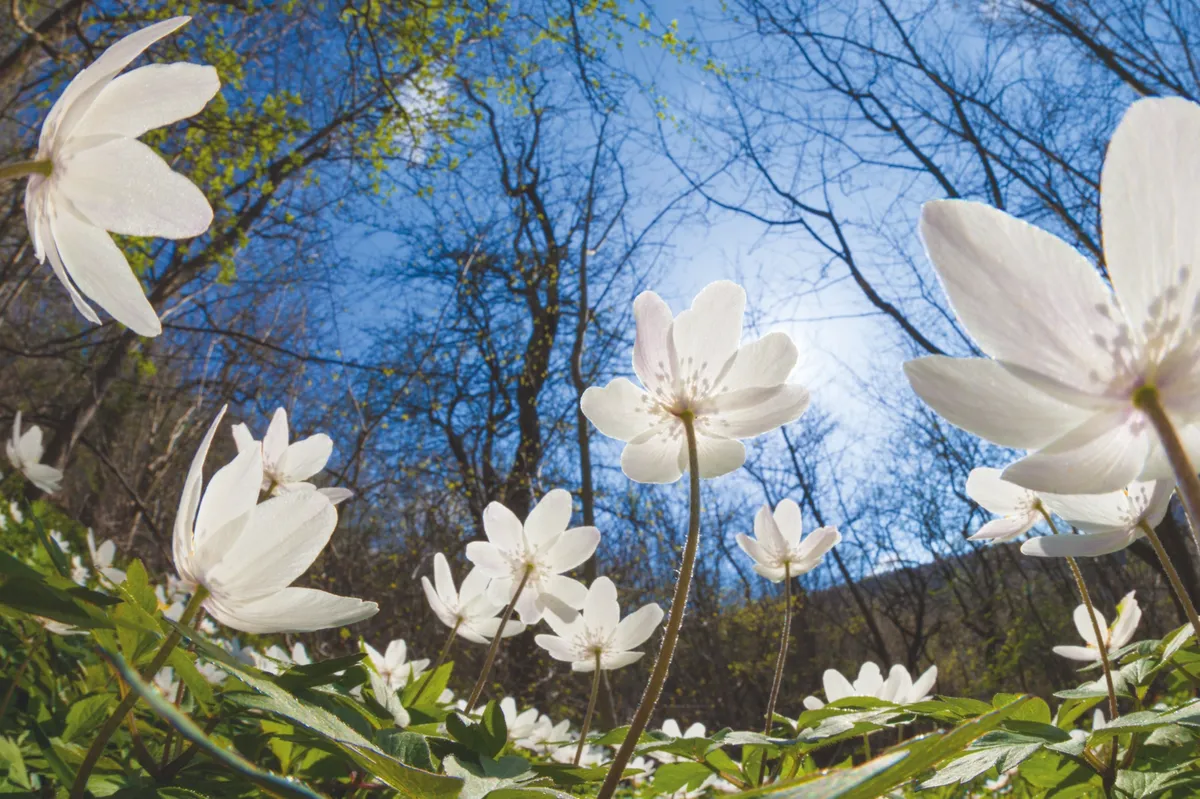
Sometimes a flower is more than just a flower. The wood anemone, which brings to mind a beautiful white buttercup (it belongs to the same family), can tell us a lot about the land.
In early spring, before trees are in full leaf and block out the light, it blooms in sunny woodlands throughout Britain and Ireland. But not just any woodland. If you see an impressive display of anemones carpeting a clearing like a constellation of blinking stars, the chances are you’re in an ancient wood, at least 400 years old.
Wood anemones also grow out in the open on banks and verges, or at the edges of fields: here too, they may serve as historical clues. Their presence in an apparently odd location often points to a vanished wood, long since cleared, as if the land has a memory in leaf and petal form. Countryside historians such as the late Oliver Rackham refer to these flowers as “woodland ghosts”.
Anemones spread exceptionally slowly, by means of swollen roots called rhizomes, which creep outwards like fat fingers through the rich woodland soil. This is why they are seemingly so reluctant to colonise new ground. Having said that, they’re popular with gardeners, too – you can’t always be sure that someone hasn’t planted them.
Find out more about spring flowers:
Common sandpiper (Actitis hypoleucos)
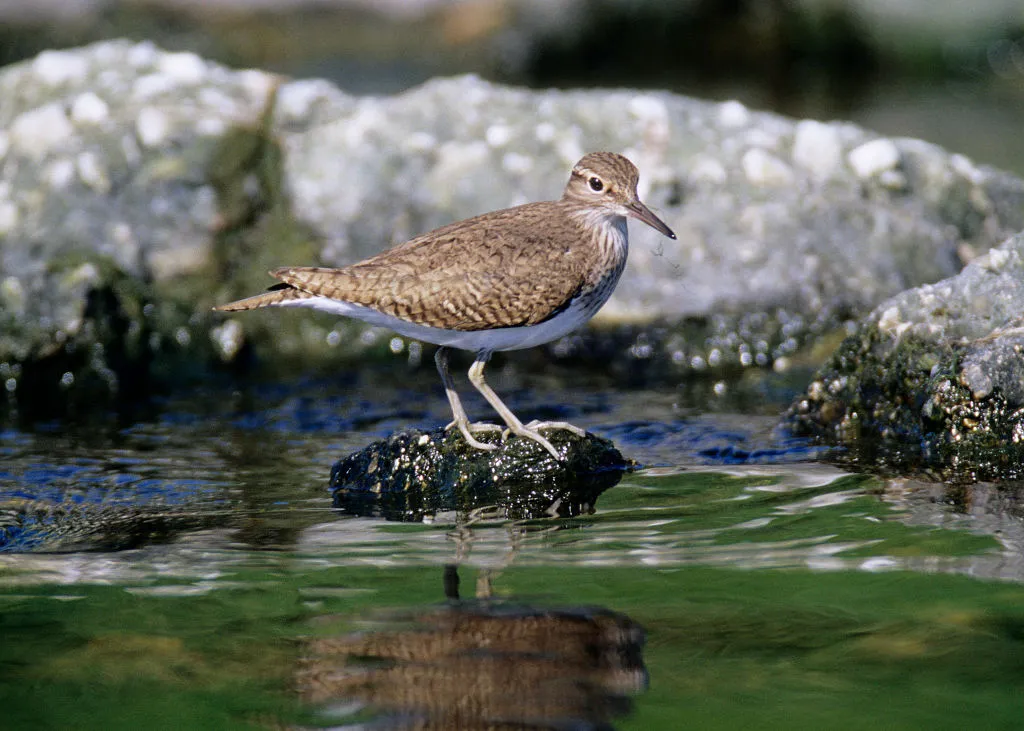
Some of our British common sandpipers winter here; where the rest migrate to used to be a puzzle. Now geolocator tags, fitted to Scottish breeders, have shown that they head to the mangroves and mudflats of West Africa.
This month they’re back, and will turn up almost anywhere, including canals, reservoirs and park lakes. Usually a three-note whistle grabs your attention first but their tail- pumping and flickering flight low over the water are also diagnostic. Within a couple of weeks, they’ll have moved to the pebbly upland rivers where they nest.
Black oil beetle (Meloe proscarabaeus)
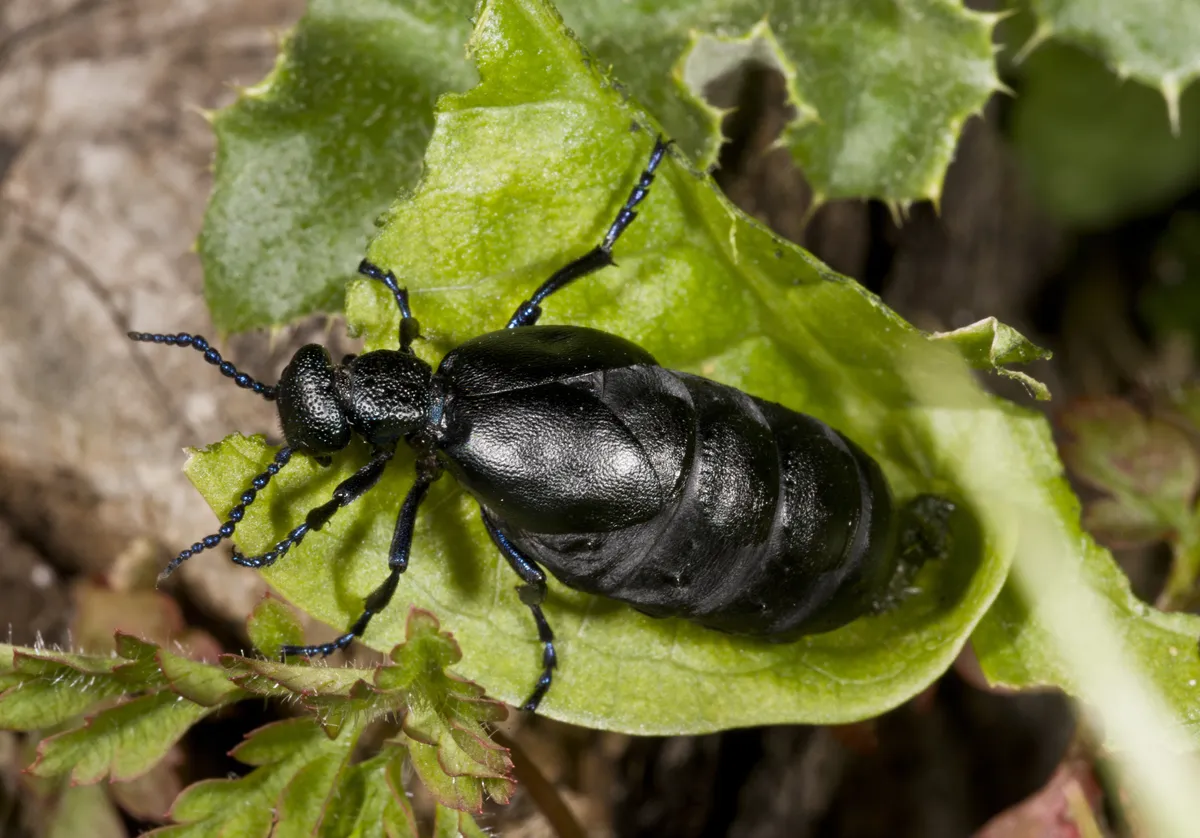
A nasty surprise awaits any predator that attacks one of these portly beetles. They may be sluggish, but they are quick to discharge cantharidin – an oily irritant that is the hallmark of the world’s large blister beetle family.
In spring it’s the females you will meet, crawling over rough flowery grassland in search of suitable burrows to lay their eggs in. Britain’s black oil beetles are scarce nowadays, so report any you see, especially outside their south-west stronghold.
Purple saxifrage (Saxifraga oppositifolia)

Purple saxifrage will be blooming in several of the most mountainous National Parks, including the Brecon Beacons, Snowdonia, Lake District, Yorkshire Dales, Cairngorms, and Loch Lomond and the Trossachs.
It clings to high cliffs and rocky outcrops, hugging the ground to escape the wind and soak up weak spring sunshine. April’s glorious mats of pinkish-purple flowers are frost- resistant and sometimes appear before the last snow has even melted.
Ash tree (Fraxinus excelsior)
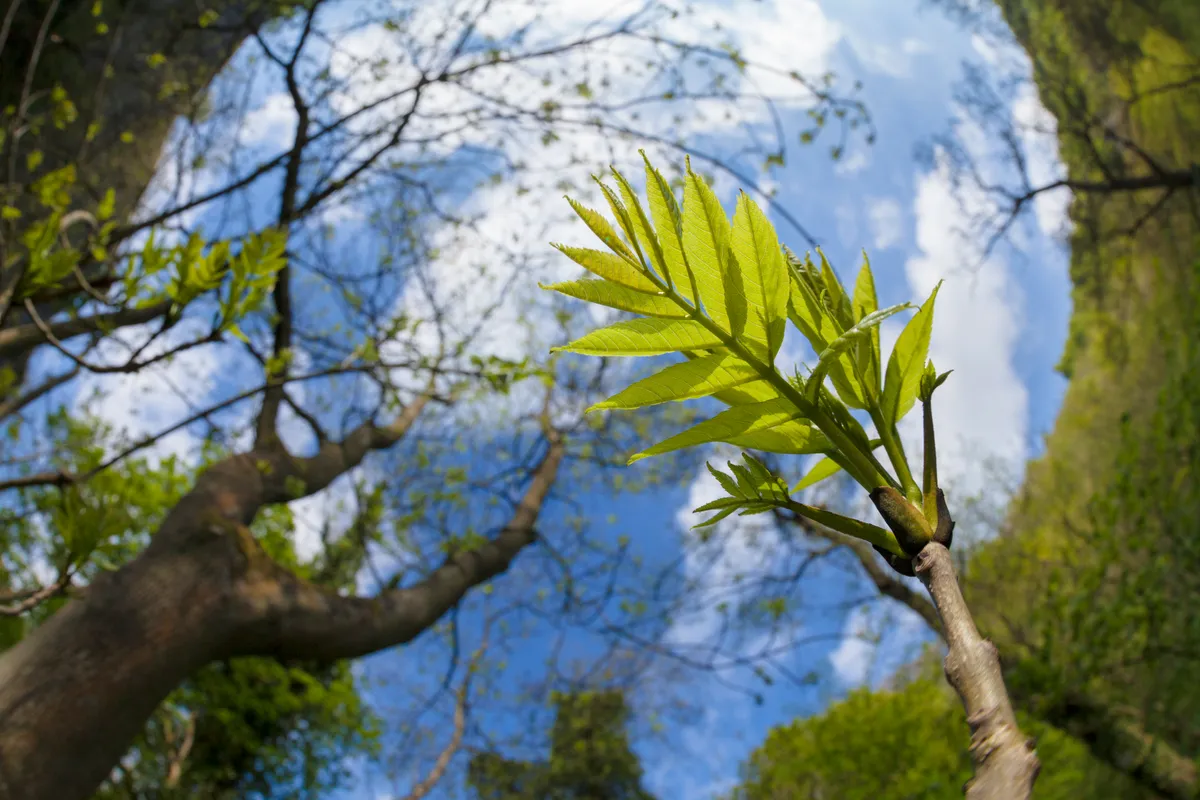
Country lore dictates that if ash leafs before oak, we’re due for a summer soak, and conversely that if oak beats ash, we’ll get merely a splash.
Analysing 17 years’ worth of data submitted to the Nature’s Calendar survey, Kate Lewthwaite of the Woodland Trust says that currently the latter is the rule. “On the whole, oak budburst tends to happen before ash budburst,” she says.
“Oak is five days ahead of ash on average, though ash seems to have sped ahead on a few occasions.” Why not see for yourself, and share your results with the survey.
Find out more about trees in the UK:
Fulmar (Fulmarus glacialis)
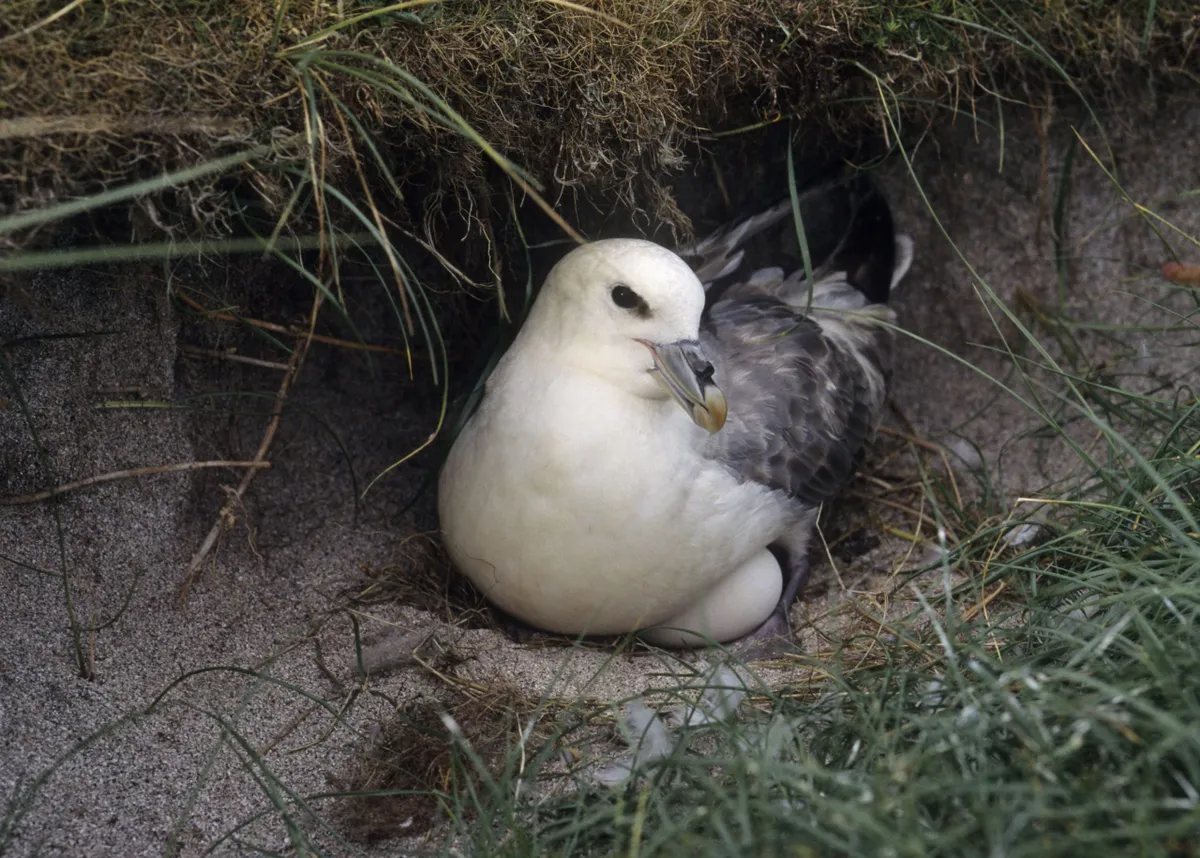
On dramatic sea cliffs, pairs of fulmars are busy displaying to renew their long-term pair bond – divorces are almost unheard of. They also expend much energy cleaning out their nest ledges and hollows, and bickering with neighbouring pairs.
So much so that, in April, the exhausted female fulmars all desert the colony and head to sea to feed for up to 20 days. The mass exodus enables them to lay down enough fat to form their single large eggs, laid in May.
Serotine bat (Eptesicus serotinus)
Moths and midges beware: after five or six months of hibernation, hungry bats are now out in force. Some species, especially pipistrelles, might already have ventured outside their roosts in mild winter weather, but April is traditionally when Britain’s bats become active.
The serotine is one of our largest bats, and a specialist beetle-hunter. It is found in southern England, along mature hedgerows and woodland edges, and beside water. At twilight, you might notice its distinctive slow flight but, to clinch the identification, you really need a bat detector.

